CLINTON WINS!
On November 8, 2016, the United States will elect its first female president, Hillary Clinton. After a campaign that played like a mud wrestling match between a reality television personality and professional politician, the View is confident that Clinton will prevail in a landslide. And so our season of ill-considered tweets and unfortunate insults will come to an end, leaving behind a dusting of nasty anger throughout the land.
Perhaps the soundest, most recent, analogy – in terms of national rancor and distrust – for what comes next is the post-Richard Nixon years, a well-intentioned stretch of Gerald Ford-Jimmy Carter that led to Ronald Reagan’s Morning in America, and, later, President Clinton’s husband. We wish President Clinton the very best in doing better than her 1970s predecessors. And we’re optimistic that new candidates will emerge to provide us with the hope that sustains a Great Nation while possessing the competencies necessary to govern during ever-challenging times.

Trans Bay Cable Pumps Pittsburg Power into San Francisco
BY MICHAEL IACUESSA
I n 1998, a construction crew error disrupted a Pacific Gas and Electric Company substation in San Mateo, cutting power to 250,000 San Francisco customers for up to six hours. Traffic jams materialized as signals went dark. Streetcars and electric buses shut down. Water pressure dropped, as pumping stations ran on emergency power. The San Francisco Fire Department answered calls from at least 50 high rise buildings about people trapped in elevators.
The event, along with a series of brownouts that occurred a few years later – some of which were triggered by electricity market manipulation in the early-2000s – suggested a weakness in the grid. With two aging power plants – at Hunters Point and Potrero – in San Francisco, increasing reliance on transmission lines coming from just one direction – the Peninsula – and the ever constant threat of earthquakes, energy regulators searched for ways to improve reliability.
A midst calls to shutter the Hunters Point and Potrero power plants, led by Dogpatch-based San Francisco Community Power, among others, the California Independent System Operator – responsible for grid reliability – identified a 53-mile power line submerged under the Bay from Pittsburg to the Central Waterfront as the solution. The project was pushed by Trans Bay Cable, a private firm. The cable was slated to deliver 400 megawatts (MW), approximately 40 percent of the City’s peak power requirements, produced from generating stations located in Contra Costa County.
The Trans Bay Cable was completed in 2010. The Potrero Power Plant, which had become the most polluting generator in the state, closed in 2011, several years after the Hunters Point facility had been decommissioned.
“TBC provided San Francisco with an added level of power security, and it contributed to the City’s ability to shut down the Potrero Power Plant, and it diversified the power transmission options in San Francisco,” said PJ
Johnston, spokesperson for Trans Bay Cable. He added that given environmental concerns, and that the plant was well into its fifth decade, it likely would have been closed regardless. “Potrero would have had to be replaced if it were not for TBC; and the cost of replacing Potrero would have dramatically exceeded the cost of TBC,” he asserted
The then owner of the Potrero Power Plant, Mirant, had tried to vastly expand the facility, but was rebuffed by community advocates, including the Potrero Power Plant Citizens Task Force and SF Power, some of whom similarly opposed development of the Trans Bay Cable. The cable’s cost – eventually $505 million – seemed excessive for those who believed building a network of smaller resources, including solar, wind, and better energy management, would ultimately be more reliable and less expensive.
Submerging electrical cables has become big business in the last decade, with sales of high voltage submarine
‘Bottle Bill’ Author Says Recycling Law Hurts Small Businesses
BY DAVE KOSTIUK
As reported by the View last July in “Recycling Requirements Continue to Threaten Good life Grocery,” the California Beverage Container Recycling and Litter Reduction Act of 1986, known as the “Bottle Bill,” requires grocery stores within designated “convenience zones” to accept recyclable containers. Stores that don’t comply are subject to daily fines. To the chagrin of small storeowners within these zones, big retailers—those that generate more than $2 million annually—typically prefer to pay the fine than to create recycling centers, an option that small shops can’t afford.
FREE Serving the Potrero Hill, Dogpatch, Mission Bay and SOMA Neighborhoods Since 1970 NOVEMBER 2016
Vice President Tim Kaine and President Hillary Clinton.
PHOTO: iStock
TRANS BAY continues on page 13 BOTTLE BILL continues on page 14
Potrero Hill residents Jennine Jacob and Stacey Randecker Bartlett, along with other San Franciscans angry about encampments in their neighborhoods, pitched tents last month in Civic Center Plaza. The protest followed an incident in which Jacob took her three-year-old son to Franklin Square playground and found a homeless man sleeping in the sandbox; at Jackson Square Playground they encountered another homeless individual sitting on the children’s play structure. On another walk with her son, Jacob saw sex acts being exchanged for money in an open tent. She regularly sees drug deals.
“There’s no way to go to get to Point A to Point B without passing some terrible situation,” said Jacob, who owns Mrs. Peasy, which rents party supplies. “It’s so sad to see people living that way and how we tolerate it in this City.” “You have to mobilize,” Randecker Bartlett said. “A tent is not a permanent home. You can’t have a job living in the tent.”
Playground has launched its renovation of the Thick House theater, installing new air conditioning, lighting, seating, and signage. Donations of $2,000 or more to the remodel will be acknowledged with a naming of a new seat. In the meantime, the company is working out the kinks of The Potrero Nuevo Project, a set of six micro-plays that focus on aspects of Potrero Hill, including the decimation of its original inhabitants – the Ohlone Tribe – De Haro’s murder, and the past and pres-
ent emergence of tent cities. Though the project takes on serious topics, it’s funnier than it sounds…
The Potrero Hill Neighborhood House recently received $25,000 in matching funds from Kaiser Permanente to help pay to replace windows and asbestos shingles on the gym’s eastern side, as well as termite damage to the building housing the preschool. Piper Software is now leasing the facility’s southeast wing, and is offering a free afterschool program in electronics and programming...The Center for Biological Diversity, Coalition for Clean Air, Communities for a Better Environment and the Sunset Coalition filed a “friend of the court” brief in support of those opposed to the Golden State Warriors’ proposed 18,000-seat Mission Bay arena. The groups asked the First District Court of Appeal to find that the City’s review of the project failed to quantify and mitigate greenhouse gas emissions or inform the public about cancer-causing toxic air contaminants. They also contend that the City’s 2015 environmental impact report violates the California Environmental Quality Act.
Therapist Karen Erlichman, who was profiled in the July View, may have to leave Potrero Hill in the wake of the sale of her Connecticut Street building when her lease ends at the end of the year. Another sign of the times; what will San Francisco be when shrinks can no longer afford to be here?
OP-ED We Must Reinvest for a Safe and Reliable BART
BY JONATHON KAAS
On November 8, you can dramatically improve our regional transportation system by voting “yes” on the BART bond, Measure RR. A “yes” for RR will bring $3.5 billion in investment to keep BART safe and reliable. RR will allow BART to update fundamental parts of its system that are 44 years old: replace more than 90 miles of original 1960s track, upgrade the Pong-era train-control computer system, renew old electric power infrastructure, repair aging tunnels, and replace broken escalators.
These core investments will not only ensure BART’s safety and reliability; they’ll allow BART to dramatically increase its capacity. A modern train control system and power upgrades will enable BART to run longer and more frequent trains. This’ll create space for nearly 200,000 additional daily riders, who don’t fit on trains today. That’s more new riders than triple the number of people who ride Caltrain daily.
Although Potrero Hill doesn’t have a BART station, Measure RR is critically important to Hill residents’ quality of life. When BART doesn’t function well or doesn’t keep up with the Bay Area’s growth, more cars funnel onto congested streets and highways, slowing our commute. Equally important, getting more people on BART and out of cars is critical to keeping our air clean and our City on track to meet its ambitious greenhouse gas reduction goals. BART has the lowest greenhouse gas emissions per passenger mile of any major U.S. rail system, even before its recent commitment to go to 100 percent renewables by 2025. When BART works we all benefit.
Without meaningful investment, declining reliability and capacity constraints will undermine sustainability goals, increase roadway congestion, and disrupt access to jobs and services. The time has come to take responsibility for our transportation infrastructure, and rebuild BART from the ground up.
STEVEN J. MOSS
Despite decades of trying, or at least talking about trying, to tackle the problem, there are at least as many homeless individuals in San Francisco as there were 30 years ago – a few of them the same people – and very likely more. There’s no single answer as to why this is the case, though lack of political will is a notable factor. To “solve” the challenge – if it can be – we need to clearly see what’s causing it. Nine significant factors are influencing the size of the City’s street population, the recognition of which suggests a different set of possible solutions than typically discussed.
Family exodus: San Francisco has added roughly 90,000 people over the last 65 years. About 80,000 dwelling units were constructed during the same period, many of them studios or onebedrooms. Supply has roughly met population growth, though demand is likely significantly higher. This suggests that insufficient housing stock may not be the primary problem. A more powerful contributor is probably shrinking household size. In 1950, about three people lived in a given home on average; down to two today. The major cause of this decline is a steep drop in the number of children in the City, from almost 160,000 less than 18 year-olds in 1950 to fewer than 60,000 today. Bringing back families would create a cascading set of benefits, including, potentially, more efficient use of existing housing, not to mention a great deal more silly laughter on the streets. The solution: construction of family-sized homes and excellent public schools would attract families and graduate individuals less likely to become homeless, a twofer.
Lockstep housing: Recent talk about “micro-units” – which used to be called “tenements” – and modular homes should be the beginning of a comprehensive discussion about how to unleash lots more housing style density and diversity than currently allowed. With existing required minimum
characteristics and construction prices – upwards of a half-million dollars a small unit – we’ll never be able to afford to build enough homes for everyone. Instead, we need a ladder of housing possibilities, as well as a few stepping stools. Manufactured home parks, sanctioned camping facilities, dormitories, boarding houses, houseboats, even teepees should be on the table. The solution: more flexible building codes and creative land use.
Unengaged relatives: Back in the day, particularly for recent immigrants, we took care of Uncle Bob, even though he was a little odd, getting him a part-time job at the hardware store, and letting him live in the attic or basement. Not so much anymore. Bob is now on the streets, with no one who really cares to look after him. The solution: foster care payments for caretakers of adults, separate from disability,
HOMELESS continues on page 19


2 THE POTRERO VIEW November 2016
THE VIEW IS PRINTED ON RECYCLED NEWSPRINT WITH SOY-BASED INK. PUBLISHER Steven J. Moss PRODUCTION MANAGER Helena Chiu FINANCE MANAGER Catie Magee THIS MONTH’S CONTRIBUTORS Chris Block, Jacob Bourne, Annika Darling, Michael Iacuessa, Jonathan Kaas, Jordan Katz, David Kostiuk, Paul McDonald, Rebekah Moan, Steven J. Moss, Brett Yates, Jessica Zimmer Editorial and policy decisions are made by the staff. Published monthly. Address all correspondence to: THE POTRERO VIEW, 2325 Third Street Suite 344, San Francisco, CA 94107 415.626.8723 • E-mail: editor@potreroview.net • production@potreroview.net (for advertising) Copyright 2016 by The Potrero View. All rights reserved. Any reproduction without written permission from the publishers is prohibited. Homeless Play Money Move Why San Franciso Has a Homeless Problem BY
PUBLISHER’S VIEW
SHORT CUTS
Data Provide Insight into Progress with Homelessness
BY CHRIS BLOCK AND STEVEN MOSS
In a series of articles this year, the View reported that the City’s response to homeless encampments is often reactionary. For instance, earlier this year District 8 Supervisor Scott Wiener requested information about housing and the homeless from the Mayor’s Office, and demanded removal of Division Street encampments, with the occupants provided with a reasonable chance for shelter and housing. Wiener’s questions weren’t answered until the Division Street campers were rousted, their possessions thrown away, illegally, according to the Lawyers’ Committee for Civil Rights. It appeared that most of the inhabitants simply relocated their tents to nearby roads and alleys.
The City recently demonstrated a more thoughtful approach in negotiations with the Dogpatch Neighborhood Association to remove an Islais Creek encampment and site a Navigation Center on 25th Street. This more considered method followed initially fierce opposition by Dogpatch residents to the center.
The new Department of Homelessness and Supportive Housing, and its Encampment Resolution Team, may emerge as an effective vehicle to work with neighborhoods and encampments, if there’s enough housing and shelter to give people a real opportunity to move from the streets. Without adequate alternatives, the City will repeat the Division Street experience, shifting people from one rough camp to another, accomplishing little and greatly increasing the suffering of individuals
Candidates
View Election Recommendations
President and Vice President: Hillary Clinton and Tim Kaine
United States Senator: Kamala Harris
U.S. Representative: Nancy Pelosi
State Senator: Scott Weiner
State Assembly: David Chiu
State Propositions
Vote “yes” on:
Proposition 51, school bonds
Proposition 52, Medi-Cal hospital fee
Proposition 54, legislature
Proposition 57, criminal sentences
Proposition 58, English proficiency
Proposition 59, corporations
Proposition 61, state prescription d rug purchases
Proposition 62, death penalty
Proposition 63, f irearms
Proposition 64, marijuana legalization
Proposition 67 ban on single-use plastic bags
Vote “no” on:
Proposition 53 revenue bonds
Proposition 55 tax extension
Proposition 56 cigarette tax
Proposition 60 adult films
Proposition 65 carryout bags
Proposition 66 death penalty
living on the avenues.
San Francisco has a three-pronged homelessness strategy: provide, particularly supportive, housing; offer shelters, including Navigation and treatment centers, as well as other forms of interim accommodations; and distribute bus tickets out of town. The City has pursued this approach for a longtime. It’s gotten thousands of people off the streets, but the homeless population hasn’t changed significantly for 30 years, which prompts the question as to whether the City is pursuing the right strategy or doing enough to reduce the number of people living on the streets.
Local Measures
Vote “yes” on:
Proposition A, $744.25 million school bond
Proposition C, affordable housing bond
Proposition G, police oversight
Proposition L, lower the vote required to reject the San Francisco Municipal Transportation Agency’s budget
Proposition O, office development on Candlestick and Hunters Point
Proposition T, restricting gifts and campaign contributions f rom lobbyists
Proposition V, tax on distributing sugar-sweetened beverages
Proposition RR, BART safety and reliability
Vote “no” on:
Proposition B, $99 parcel tax
Proposition D, special election for vacant supervisor seat
Proposition E, street tree maintenance
Proposition F, g ive 16 and 17 year-olds the right to vote
Proposition H, public advocate
Proposition I, f unding for seniors and adults with disabilities
Proposition J, f unding for homeless and transportation
Proposition M, housing and development commission
Proposition N, non-citizen voting on school board elections
Proposition P, competitive bidding for affordable housing
Proposition Q, prohibiting tends on public sidewalks
Proposition R, neighborhood crime unit
Proposition S, a llocation of hotel tax funds
Proposition U, affordable housing requirements for market-rate development
Proposition W, real estate transfer tax
It’s for these reasons that last month the View launched an effort to track a set of metrics related to homelessness, and is providing this information to SFGate and other media outlets as part of the SF Homeless Project. These data, over time, are intended to enable readers to gauge whether or not the City is making progress housing, sheltering,
or transporting the homeless elsewhere. The View hopes that this information will provide a basis for government officials and citizens to have honest discussions about municipal efforts to humanely and effectively deal with the people living on the streets.
California College of the Arts Student Housing Approved
BY JESSICA ZIMMER
Last month, the San Francisco Planning Commission voted seven to zero to approve California College of the Arts’ (CCA’s) proposed four-story 228-bed student dormitory at 75 Arkansas Street. The endorsement was the culmination of a two-year effort by CCA to site additional student housing near the school’s Eighth Street campus. Construction will begin next spring
and take approximately 16 months; the dormitory is expected to open in the fall 2018.
CCA presented the building’s design twice this year to the Potrero Boosters’ general membership and development committee. The college also met with individual Booster members, and consulted with a CCA student and residential life staff steering group.
CCA continues on page 5
3 THE POTRERO VIEW November 2016
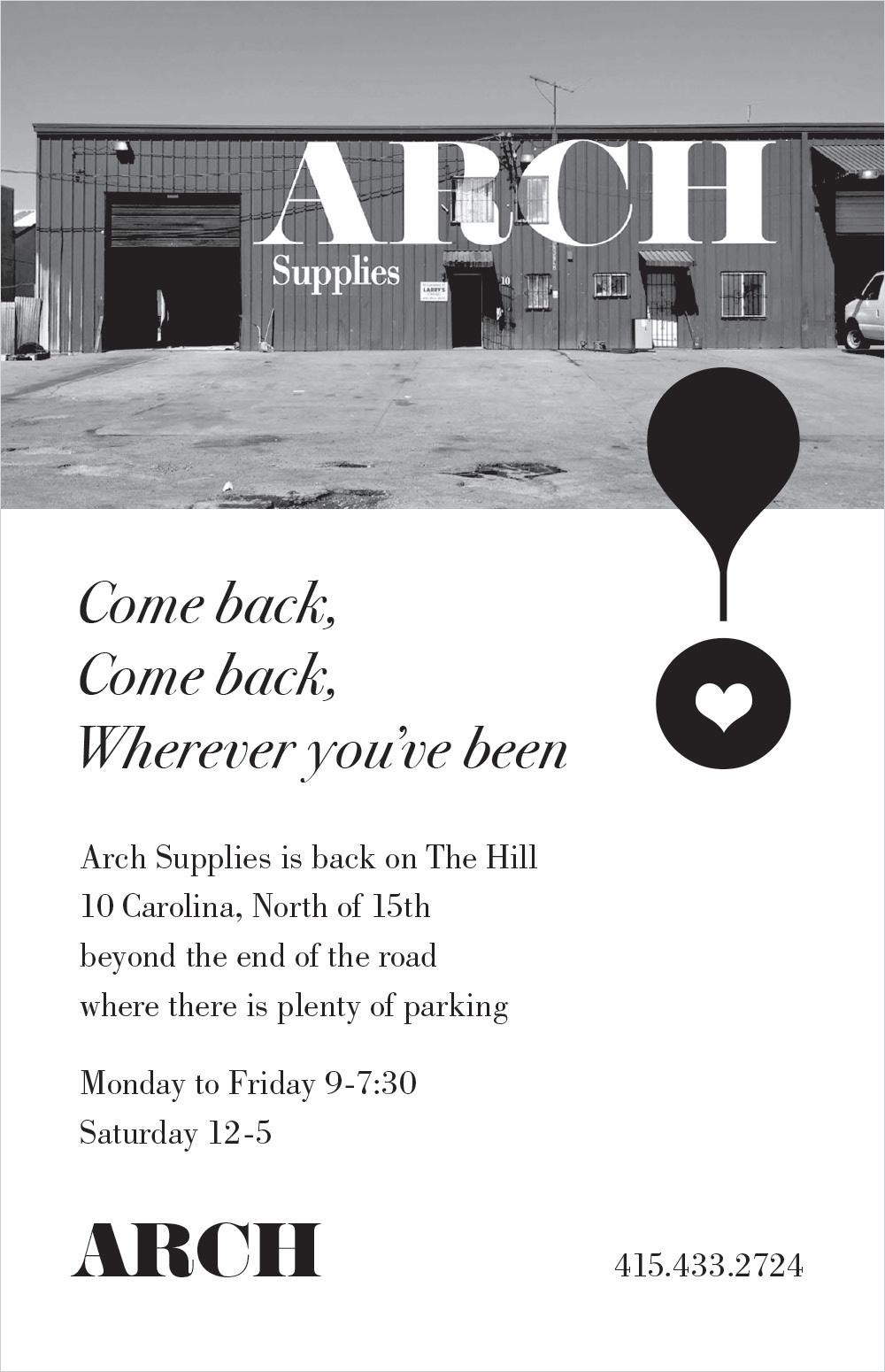
At Rock Band Land, Kids Learn to Love the Process
BY JORDAN KATZ
It’s not uncommon to be left scratching your head over the lyrics to a rock song. That may be because, in many cases, the songwriting process is as important to an artist as the final message the tune delivers. Brian Gorman, along with the rest of the Rock Band Land staff, is teaching kids exactly that: to love the creative process.
“Primarily, we focus on creative collaboration,” Gorman said.
Rock Band Land, located on 17th Street, invites kids ages five to nine to “Rock Out!” as part of its six-week-long courses. Gorman and his partner, Marcus Stoesz, lead young rockers through various stages of story- and songwriting. They begin with an introduction to fellow classmates and instruments. Then, they form a band name. Later, they move on to brainstorming story and musical ideas, in which participants convey their favorite lyrics and musical sequences. Gorman and Stoesz take those thoughts and turn them into a song that they teach back to the kids, who practice and perform it at “The Big Show” at the end of the session.
Kids also participate in a studio recording session at Rock Band Land. Up to 300 of those songs and stories, with names like “Fish Wife” and “All the Potstickers in the World!” are available on the Rock Band Land website.
RBL also produces a podcast for kids.
For four-year-olds who are ready to rock, RBL offers a pre-K Rock Out! session which explores and deconstructs a classic Rock Band Land song. By the end of the session, the four-year-olds record the song with their own vocals. RBL also hosts yoga for children as young as two-years-old.
According to Gorman, Rock Band Land has been around in some form for the better part of a decade, but it didn’t become what it is today until about seven years ago. A former pre-school teacher and touring musician, Gorman said he was inspired to make rock music with kids when he noticed that the music his students were listening to seemed lacking.
“I would come back [from being on the road] and be in class and would hear the music that kids were listening to and the school was encouraging and it would sort of make me crazy because it was very condescending and overly simplistic and saccharine and just really tedious to listen to, I felt like for everyone,” Gorman said, who previously was a preschool teacher. “I felt like we could do better.”
Part of doing better, Gorman explained, is allowing kids to create art outside their parents’ influence. “This is a place for the kids to create,
ROCK BAND continues on page 19


4 THE POTRERO VIEW November 2016 THINK DYNAMIC & TENACIOUS Think Zephyr. Highly competitive and nuanced, the Bay Area real estate market can be both challenging and rewarding. Zephyr turns local clients into successful home sellers, buyers and investors. ZephyrRE.com
According to David Meckel, CCA’s director of campus planning, Friends of Jackson Park (FoJP), the Potrero Dogpatch Merchants Association, Save the Hill, and the San Francisco Recreation and Parks Department have been “fantastic” partners. In response to input from stakeholders, CCA’s architect, Leddy Maytum Stacy (LMS) Architects, continually adjusted the structure’s blueprints.
A key to securing FoJP and Boosters support was provision of a defined benefit to the community. “We’ve committed to in-kind design and fabrication services for a yet to be described scope that we will help articulate through work with the community and City agencies,” Meckel said.
According to Jude Deckenbach, FoJP executive director, CCA agreed to build a fence, seating or shading for Jackson Park. Deckenbach also wants the college to support a FoJP initiative to create a parklet on Carolina Street.
According to Meckel, a primary challenge in designing the dormitory was to create a building “in the middle” in terms of architectural design. “The sites north of 17th Street are big industrial properties. The sites south of 17th are smaller neighborhood residences. We’re trying to match the rhythm of both areas and give the building contemporary nuances,” he said.
J.R. Eppler, Boosters president, said when the Boosters first saw the designs its members felt that the building was too drab. “Everyone thought that because this was student housing for art students, there should be a little more pizzazz, a little more visual interest. We feel that CCA has come a long way in the design,” said Eppler.
Suzanne Brown, principal at Equity Community Builders, the real estate development company managing the project, said LMS Architects integrated a varied roofline and horizontal lap siding into the design.
“Instead of the building looking like one giant building, CCA is bringing color, a variety of materials, and bay windows to the project to improve horizontal modulation,” said Brown. “The goal is to make it look like it is smaller buildings all sitting next to one another. The roof line will go up and down along the façade. Also, the middle floors of housing will combine the windows from the second and third floors. A roof cornice will top the building.”
Meckel said the windows will keep the interior naturally ventilated, solar shaded, and energy efficient. The president of the local business supplying the windows, Jeremy Drucker of Blomberg Window Systems, is a CCA architecture alum.
The 48-foot high, 64,339 square foot building will contain 30 units and roughly 228 beds on its top three floors, with 27 four-bedroom units and three two-bedroom units, one per floor, for residential life staff, who will serve as student advisors. Each four or two-bedroom unit group will have two full bathrooms, study areas, a full kitchen, and a large living room. All rooms will have bay windows. “These units are more apartment-style than dormitory-style,” said Meckel. “They will be for those students who like to cook.”
The building’s ground floor will feature 7,400 square feet of retail space on one corner. Brown said Potrero Hill residents and CCA’s students want the area to house a deli selling prepackaged food. The ground floor will also hold a multipurpose room for CCA students, open to community members to reserve at no fee, and storage for approximately 94 bikes. “We are also talking about widening the sidewalk on Arkansas Street for approximately 130 feet and installing benches and landscaping to provide additional public gathering space,” said Brown.
CCA will use the same landscape architect that Martin Building Company employed for the 88

Arkansas development. “Both sides of the streetscape will result in a coordinated, traffic calming gateway to 17th Street and the park,” said Meckel.
Meckel confirmed that the building won’t cast a dark shadow over Jackson Park. When Hill residents initially saw the dormitory plan they were concerned that the structure would darken the park. Equity Community Builders completed a shadow study, and found that the building’s shadow effect will only be present for a short time at around 7 a.m. at the north end of the ball field, an area covered with trees, at the beginning of the summer. The Planning Commission adopted the shadow study findings on October 6.
“Theirs is the lowest-impact development coming in. I think the housing will activate the street more at night,” said Deckenbach.
Candace Soohoo, San Francisco Planning Department deputy communications manager, said the department isn’t concerned about CCA’s plans. “75 Arkansas Street is located in the Urban Mixed Use District. The UMU District is intended to promote a vibrant mix of uses while maintaining the characteristics of the formerly industrial-zoned area,” said Soohoo.
Accordng to Soohoo, the UMU District allows residential and commercial activities. UMU is also intended to serve as a buffer between residential districts to the south and Production, Distribution and Repair (PDR) districts in the Eastern Neighborhoods. “The Department’s Urban Design Advisory Team has reviewed the design and has considered the context of the proposal within the
UMU District. All proposed land uses for 75 Arkansas Street are principally permitted,” said Soohoo.
CCA will lease the entire building as a mixed-use development, including the residential units and ground floor retail space, from former CCA trustee Simon Blattner. Blattner, who bought the property in 1993, said he’s looking forward to helping CCA grow. “I’ve been on CCA’s board for 20 years. I went to classes there when I was younger, learning how to make paper. I used to play softball in Jackson Park on a pickup team. I think this is a great location. It’s a block and a half from the school. If you’re going to school in the City, it’s really complicated to try and find a place to live. This will make it easier,” said Blattner.
Blattner said the building’s current tenants, Sak’s 5th Avenue and ForaTV, have been given notice about the coming redevelopment. “Two current tenants…will be moving out prior to the start of demolition and new construction,” said Brown.
Once the building is complete, CCA will assume the property’s master lease, with options to buy at key points. “I’m excited about the opportunity to do something like this in our community. We don’t get so many chances to do something good. This is a win-win for everybody,” said Blattner.

5 THE POTRERO VIEW November 2016 CELEBRATING OUR 30TH ANNIVERSARY $3.00 OFF* Medium Pizza $4.00 OFF* Large Pizza $5.00 OFF* Xtra Large Pizza *For Delivery Only The best pizza delivery in San Francisco. Order now for fast, free delivery! (415) 206-0555 escapefromnewyorkpizza.com HAIGHT • MISSION • POLK DOWNTOWN • SOMA
CCA from page 3
BAE Systems Operates Largest West Coast Dry Dock at Pier 70
 BY JACOB BOURNE
BY JACOB BOURNE
Founded in 1999, BAE Systems is a global defense, aerospace and security solutions company, headquartered in London, operating in more than 40 countries and employing about 83,400 people. It’s one of the world’s largest defense contractors in terms of revenue, much of which comes from sales of products and services to militaries.
In addition to ship repair, the company’s global products and services extends to manufacturing aircraft and military land vehicles, supplying cyber, intelligence and security services to commercial clients, and creating a variety of electronic devices, such as
surveillance products.
P ier 70, near 20th and Illinois streets, is home to one of BAE Systems Inc.’s., a U.S.-based subsidiary, six American maritime hubs, including Norfolk, Virginia; Jacksonville, Florida; Mobile, Alabama; San Diego, California; and Pearl Harbor, Hawaii. BAE Systems focuses on repair, modernization and maintenance of U.S. Navy, Coast Guard and commercial ships. The company operates two dry docks at Pier 70, one of which is the largest of its kind on the West Coast.
“The shipyard has a history of more than 150 years with Navy ships,” said Karl Johnson, director of communications, BAE Systems. “We don’t
build ships, we repair ships in the yard; some as small as work tug boats, up to cruise ships and large Navy cargo ships.”
The Pier 70 Shipyard features a dry dock with a 54,600 ton lift capability, and a smaller dry dock with a 14,500 ton lift. The full service repair facility caters to ships on Pacific Rim trade routes, including cruise liners from Alaska and Mexico, military vessels,
Bay Area craft, container ships, dredge equipment, offshore rigs, research vessels and yachts. According to Johnson, though the dry docks can handle the largest vessels that navigate Pacific routes, there are ships in the world that exceed the dock’s weight limits which would need to be serviced elsewhere. In addition to dry docking and repair, BAE Systems provides vessel life extension, maintenance, marine fabrication, modernization, and ship conversion to enhance or change ship functionality.
“The ships we work on in the San
BAE continues on page 17
Potrero Power Plant Site to be Developed by New Owners
BY REBEKAH MOAN
The 21-acre Potrero Power Plant site is slated to be developed into housing, retail, and open space. The power plant, once one of the dirtiest in California, was shuttered in 2011 after more than a decade of advocacy by nonprofit San Francisco Community Power, among others.
After it was closed the power plant site was divided into seven remediation areas as part of an effort to remove manufactured gas plant residues, including heavy metals, left behind from decades of use. Former plant owner, Pacific Gas and Electric Company (PG&E), has completed
cleanup efforts in three of the areas: the PG&E-owned Hoe Down Yard, the Switchyard/General Construction Yard, and Station A, which is now owned by Associate Capital. Work continues in the four remaining areas: Northeast – including a portion of the Pier 70 property – Offshore Sediment, Tank Farm, and former Power Generation, according to PG&E.
PG&E sold the property to Southern Company in 1999; the site has since changed owners a few times. In September, Associate Capital purchased the property for an undisclosed amount.
POTRERO POWER continues on page 17





6 THE POTRERO VIEW November 2016 We’ve got your back San Francisco. sutterhealth.org/sanfrancisco California Pacific Medical Center Sutter Pacific Medical Foundation Ruptured disk? Irregular heartbeat? Cancer diagnosis? No one likes to think of “what-ifs”, but that’s our calling. With four CPMC hospital campuses and eighteen physician offices throughout the city, you’ll find expert care close by. Comprehensive cancer services. Advanced stroke care. Transplant specialists. So whether you need a cardiologist in Noe Valley or joint replacement in Pacific Heights, we’re ready for you. Expert care, when you need it most. PRIMARY & SPECIALTY CARE 350 Rhode Island Street Call 1-888-699-DOCS
BAE Shipyard.
PHOTO: JACOB BOURNE
Christopher’s Books celebrates 25th anniversary
BY JESSICA ZIMMER
Last September, Christopher’s Books, a Potrero Hill fixture at 1400 18th Street, marked its 25th anniversary with more than 50 guests, a taco truck, live music, bubbles, wine, and cookies. According to owner Tee Minot, who purchased the store from founder and store namesake Christopher Ellison in 1994, “Christopher’s Books is kind of an oasis of sorts. It is a quaint curated neighborhood bookstore… delivering an authentic customer experience.”
“They always have the best editions of books,” said Alex Khosh, who stopped by to browse. “I grew up in San Francisco. It’s been here since I’ve been here.”
“My nieces and nephews were fascinated by the fact that you could open up the closet to the bathroom and come in here,” said Patricia Carr, a regular customer who lived in an apartment behind the bookstore for 22 years. “It was convenient. I buy all my books here. I can always find something to read. I walk up to Tee and say, “I’m in the mood for a good thriller.” The staff knows their merchandise.”
Christopher’s offers a wide range of books, including new mysteries, San Francisco history, cultural studies, politics, photography, and visual culture. The store has a broad children’s selection that contains fairy and folktales, poetry, bilingual books, chapter books, and puzzles, toys, and games. According to Minot, Christopher’s offers a different experience than online retailers. “It’s a place where people can go and just hang out on Potrero Hill. You can browse here for hours. It’s also a place that people let their kids walk to for the first time. They know that it’s a safe place for them to be. There is a familiarity between the people who work here and the community,” she said.
Christopher’s has roughly a half-
dozen part-time staff, many of whom live on the Hill. Her team helps choose the store’s selections, and, according to Minot, knows the customers. “There’s something intimate about it. I think that’s part of the reason it is done well. I’m an on-site owner. That can make all the difference in a small neighborhood shop,” she said.
Minot said that she and her team feature volumes that they believe are important to Potrero Hill, and to San Francisco. “I’ll order a book if I think it should be on the shelf, even if nobody buys it. Sometimes I’ll get a title that’s a mirror of what people are thinking about,” she said. Minot added that
and the books fit well in them,” said Minot.
In the early 1970s, the pharmacy was converted into a second-hand shop, The Little Red Door Thrift Shop. “…a second-hand store of the Olivet Presbyterian Church, at Missouri and 19th, run by Lena Carmena,” said Linenthal. Carmena was Enola Maxwell’s –longtime director of the Potrero Hill Neighborhood House (Nabe) – mother. Enola, in turn, was former District 10 Sophie Maxwell’s mom. The Nabe’s current director, Edward Hatter, is Carmena’s great-grandson.
In 1975, Linenthal bought the property. His step-sister, Morissa

responsiveness is key to the store’s success. Christopher’s orders out-ofstock books twice weekly for same week delivery.
“I had my first job here at eight years old, alphabetizing books,” said Xander Walbridge, son of Leal Walbridge, a Christopher’s employee. “Now I come here and realize that it’s really curated. There’s a big personal aspect to it. I think most of the people who have been in the bookstore love that. It’s not just a bookstore. It’s a little gathering place at 18th and Missouri.”
According to Peter Linenthal, who owns the property, the wooden storefront started as a branch of Wulzen’s Pharmacy in 1905. It remained part of Wulzen’s into the 1930s. The space became The Potrero Pharmacy in the 1950s. The white wooden pull drawers on the store’s walls are remnants of its pharmacy days. “I left them because even though they stick, they look nice
McNie, turned the store into a recycling shop. “She called the center “Potter Lunch,” after an old sign I found...in the storefront,” said Linenthal.
In the 1980s, Mary Price Flowers rented the space. A curlicued, operaderived Italian motto above the front window that reads, in part, “poor little flowers,” dates to this period.
In the mid-1980s, Ellison, then a Hill resident, decided the spot would be good for a bookstore. “There was a “For Lease” sign in the window in 1991. I talked to Peter, who was thrilled with the idea. We opened that June,” said Ellison.
Minot soon joined the effort. “I was hanging out in the neighborhood a lot, having breakfast at “Just For You Cafe,” which is now down on 22nd and Third,” she said. “I saw that Ellison had started a bookstore. We became
pretty good friends. Within six months he approached me about becoming a partner. In the beginning, we were really the only two people working there. We were open from 10 a.m. until 10 p.m. every day,”
In 1992, Ellison returned to his homeland, New Zealand. Minot took over operations. Two years later she purchased the store. In 2005, Ellison moved to Mill Valley, and back to Christopher’s. He now has a once-amonth shift at the store.
“We haven’t changed a lot,” said Minot. “I think that’s part of the charm. We also don’t have a lot of staff turnover.” According to Minot, the most significant change is Christopher’s closes an hour earlier, at 9 p.m. “It seems like there were more people wandering around late at night 20 years ago. Now it’s a little bit quieter,” she said.
Christopher’s Books has been featured in a few movies. The most prominent was Sweet November (2001), a romantic drama starring Keanu Reeves and Charlize Theron. “The movie was only filmed outside the store,” Minot said. “The film used a good portion of 18th Street. They turned Christopher’s into a used bookstore, filming a few scenes in front of it. Charlize Theron’s character lived upstairs from the bookstore. She never came inside during filming. Keanu Reeves would come in every time he had a break. He spent tons of money and bought really interesting books,” said Minot.
Despite the excitement that filming can bring, according to Minot her store has a much more important regular visitor: Joe Dolce, age 11, her youngest son and a part-time staff member. “I work here after school, helping to restock. It’s inspiring when there are a lot of people in here to buy books,” said Dolce.

7 THE POTRERO VIEW November 2016 C��� �� ���� �� � ���������� ����� I�������� F���� C�������� ST. TERESA OF AVILA CATHOLIC CHURCH S����� �� ��� C��������� ���� ���� S����� ��� C���������� S������ ������ ���� �� �� �� ��������� ��� ��������� �� ���������� �� T����S��V��� �� �������� �4�� �� 10:00�� ������ ������ 390 Missouri St 415.285.5272 Visit Our Website: StTeresaSF.org S����� ������ Saturday Vigil 4:15 pm Sunday 8:30 am 10:00 am ������� ������ Tuesday 8:30 am Friday 8:30 am
Betty Packard Simplifies the Ballot, and Much More
BY ANNIKA DARLING
In response to a question from a St. Louis newspaper editor about what drove her, Betty Packard recalled studying French in college, realizing that only two letters separated the word ‘mushroom’ – champignon – and ‘champion’ – champion – and deciding that “I’d much rather be a champion than a mushroom.” Over the years Packard, nee Reed, has championed many things, including journalism, women, and her family.
Packard has long had a passion for writing. “It began in grade school,” said Packard, of her love of prose. She worked for her elementary school newspaper; in high school, during the 1950s, she encountered Mrs. Ella Sengenberg, a journalism teacher who’d educated “anybody who was anybody” who graduated from her high school to pursue reporting, including the editor of the Indianapolis Times
During her junior year, “Mrs. S” took a strong interest in Packard. One day, she brought Packard to the Indianapolis Times, marched her into the editor’s office, and told him to hire her, which he did. The following year Packard was recruited by the Indianapolis Star, and wrote for that paper throughout her senior year. She continued to work for the newspaper to



pay her way through Franklin University, studying journalism.
At the Star Packard became the county correspondent covering murder trials. It was an atypical assignment; other women were writing for the “women’s section,” covering cooking and cleaning products. Packard worked 60 to 80 hours a week, tacking on another 18 to 20 hours for school.
Needing a break, just before her senior year Packard took a leave from college and landed a job as a legal secretary. She met Jim Packard, and, on November 28, 1958, at the age of 21, she married him.
On October 1, 1960 – Packard’s birthday – Jim died in a car accident. Packard became a widow, with an 11-month-year-old daughter, Lisa, pregnant with her son, James. “When Jim died, the bottom just fell out,” recalled Packard. “I always had someone to lean on, and now I was on my own.”
The next few years weren’t easy. Her son was born with a complication, which required weekly visits to doctors and feedings every three hours, around-the-clock. Although she owned her house outright, because she was a single mother the bank required her father to co-sign for a loan. “It really made me mad,” said Packard. “It was because I was female! It seemed like everywhere I went, because I was a
female doing male things I was told I couldn’t do it. And I kept asking, ‘Why?’
“I guess [that attitude] is why I got the call in ’72, asking if I would be the chief lobbyist for the Equal Rights Amendment in Indiana; which I was for six long years.” Packard told the Indiana Senate president that the ERA was needed because there were “287 laws in Indiana that discriminate against women and children.” She recounted the time her son went to get his driver’s license and was told he needed to have his deceased father’s signature; hers wouldn’t be sufficient. “I had to raise plenty of hell over that,” recalled Packard.
The Senate president didn’t support the ERA, but promised Packard that together they’d change all 287 laws. “And we did,” said Packard. “And at the same time I also got the ERA passed; Indiana was the last state to pass the ERA.” The ERA ultimately failed, falling two states short of being ratified.
Once her children were in grade school Packard finished her college degree and went on to teach at Ben Davis High School, Indiana’s largest school. She headed the journalism department and taught there for three years, “long enough to know it wasn’t my future career. I loved teaching,” said Packard. “I loved the kids. But I didn’t like the school board censorship of the school paper. I would ask, ‘How can I teach the
first amendment if you won’t allow us to practice it?’ It was interesting and challenging, but I’ve never hesitated to take on a challenge.” She was at the school upwards of 80 hours a week, had two small kids, and “just knew there was a better way to make a living.”
She found her better living as the first woman editor for a national financial magazine, R&R Newkirk, a division of ITT Publishing, where she ultimately became the first female to sue for equal pay in the state of Indiana. “It came to my attention that I was the lowest paid editor in the editorial department, and I had just as much education – if not more so – than the other people in the department.”
She filed suit in 1973, and won it the following year, increasing her pay by 50 percent. “It was a huge learning process. I realized that through steady work there could be change. Though at times I have felt inconsequential, and there are still times I feel inconsequential…I don’t think I overvalued myself, but I didn’t undervalue myself either. I do worry about people who feel entitled; I don’t think anyone should feel entitled to anything, and I never felt entitled. I just felt like if I earn it I should have it.”
“I had a great time,” Packard said, of her stint at ITT Publishing. “I covered every major financial conference. I met really fascinating people, I traveled a lot, saw lots of things, met presidents and vice presidents of major corporations. I went to the White House. I was friends with amazing women journalists and we’d go to Washington and
BETTY PACKARD continues on page 9









































8 THE POTRERO VIEW November 2016 SAN FRANCISCO HEALTH PLAN 7905B 0815 www.sfhp.org 1(415) 777-9992 CALIFORNIA SACRAMENTO POST MISSION KEARNY NEWMONTGOMERY MONTGOMERY SANSOME MISSION GRANT STOCKTON POWELL MASON GEARY O’FARRELL HOWARD THIRDST SFHP SERVICE CENTER 7 SPRING ST #1 Choice for Medi-Cal in San Francisco* Get Medi-Cal Enrollment Help Our Service Center Dedicated to You 7 Spring Street Monday – Wednesday, Friday 8:30am to 5:00pm Thursday 8:30am to 4:00pm *Based on Dept. of Health Care Services Enrollment Reports © 2016 San Francisco Health Plan 20405B 0616 SF Quality Care Enrollment Support Certified Counselor 20405B_SFNN_ad_10x778_ENG_Final.indd 1 7/22/2016 9:45:11 AM
have fun together. It was an amazing time in my life.”
BETTY PACKARD from page 8 teer work a few months after relocating to San Francisco. Her introduction to the City, and finding avenues in which she could help, was assisted by her ties with Pi Beta Phi, her college sorority, a connection she’s nurtured over the years, serving as president in 2008, and helping to start a literacy program that she remains involved with today.
In 1975 Packard quit her job – it took three men to replace her – and started her own company, Packard Consulting, which created and/or editing newsletters, articles, pamphlets, and other marketing materials. Later that year she met Stephen Voris, a U.S. Army recruiting commander, at a party at the Indianapolis Press Club. They were married September 26, 1975.
Captain Voris was constantly reassigned to different locations. After her children graduated high school, Packard moved to Monterey, and then, in 1982, to the Presidio in San Francisco, where they resided for three years. After Voris retired from the military in 1987, they relocated to what they thought would be their “starter home”, on Potrero Hill, where they still live 30 years later. “I love Potrero Hill, the area is great, and so are the people,” said Packard.
Throughout her career Packard has traveled to give speeches. She published two books, including the self-published When Someone Is Crying, dedicated to helping people deal with death, which sold 60,000 copies in six months. The book emerged from a suggestion from a group associated with the Million Dollar Round Table, “the premier association of financial professionals,” which Packard has engaged with since she was with ITT Publishing.
Packard became involved in volun-
“I started volunteering because I was mentally in the position where I felt I had hit some of the highest pinnacles I could in my career. I was in a maintenance form of my career and living in a great City and participating in it has been important to me.”
In 1997, when Packard was director of the National Federation of Press Women, she was asked by the San Francisco Ballot Simplification Committee to find a suitable local journalist to serve on the committee. No one was available and/or willing, so Packard stepped in. What started as a two week volunteer position has lasted 20 years. Packard has chaired the committee since 2003.
The Simplification Committee provides an unbiased explanation of the measures that appear on the San Francisco ballot. With two dozen measures, more than any other year, the process this election cycle was grueling. “For this session it was three solid weeks of nine to five testimony — of hearing the measures, hearing the advocates, hearing the lobbyists, hearing the public — and coming down to a real complete unbiased book. And there are 24 City measures, most of which this
BETTY PACKARD continues on page 21
Crime, Arrest and Conviction Trends Shift; Causes Remain Elusive
BY JACOB BOURNE
California Department of Justice data suggests a dramatic decline in felony arrests in San Francisco. In 2008, there were 18,282 felony arrests compared to 8,753 in 2011, and 7,709 in 2014. For violent felonies, 3,904 arrests were made in 2008, with 1,871 in 2014. Arrests for felony property crimes have also dropped, with 3,165 made in 2008, compared to less than half that number in 2014; 1,164 arrests.
While arrests rates have fallen, violent crime rates in the City have remained steady over the years. And beginning in 2011 there was a sharp increase in reported property crimes. According to DOJ data, 51,854 crimes were reported in San Francisco for 2014, including 6,761 violent offenses and 45,093 property crimes. In total, 16,423 arrests were made in 2014.
According to Max Szabo, communications and legislative affairs manager for the San Francisco District Attorney’s Office, the DA’s rate of reviewing cases and seeking convictions is consistent with levels prior to George Gascón becoming DA in 2011, and has remained within a few percentage points since then. A drop in arrest rates by the San Francisco Police Department translates into fewer cases
presented to the DA’s Office. Szabo didn’t offer any insights as to why the police are making fewer arrests.
Based on data from “Eliminating Mass Incarceration: How San Francisco Did It,” published by the JFA Institute, which evaluates criminal justice practices and policies, since 2009 San Francisco has experienced a significantly greater reduction in jail and prison populations than the rest of California. In 2014, the City’s incarceration rate was 279 per 100,000 people, 50 percent less than statewide, and one-third less than nationally. The study cites a number of measures that have lowered incarceration levels, including the San Francisco Re-Entry Council, a 23-member group of San Franciscans which identifies ways to transition convicts back into society, and the San Francisco Sentencing Commission, which develops strategies to reduce recidivism. Fewer arrests also results in fewer individuals being sentenced to jail.
The JFA report examined San Francisco crime rates since the 1960s, and found an overall reduction in crime following a 1980 peak. Rising crime rates forty years ago resulted in accompanying incarceration increases. The
CRIME continues on page 12








9 THE POTRERO VIEW November 2016 Leaves May be Falling but Home Prices on Potrero Hill Aren’t! Susan Olk CRS, CLHMS BRE# 00788097 415.550.8835 SusanOlk@ZephyrSF.com www.susanolk.com Follow me on Facebook, Twitter and LinkedIn. Check out my website at www.susanolk.com Source: San Francisco Association of REALTORS® Multiple Listing Service (SFAR MLS). Display of MLS data is deemed reliable but is not guaranteed accurate by the MLS. JUST SOLD! Update Newest Listings Address Property TypeBD/BA/PKGList Price 882-888 Carolina2 Units - / - / 1$3,995,000 825 Rhode IslandSFR 4 / 3½ / 1$3,795,000 501-503 Connecticut2 Units - / - / 3$3,588,000 1218 MariposaSFR 2 / 2½ / 2$2,950,000 415 De Haro #406Condo 2 / 2½ / 1$1,735,888 2112 18th SFR 3 / 2 / 2$1,298,000 888 7th #225Condo 3 / 2 / 1$1,250,000 1925 23rd SFR 3 / 2 / 0$1,248,000 730 San BrunoCondo 2 / 2 / 1$1,199,000 888 7th #207Condo 2 / 1 / 1 $357,001 Recent Sales Address Property TypeBD/BA/PKGList PriceSold Price 1206-1208 19th2 Units - / - / 1$2,295,000$2,600,000 879 Rhode Island #1Condo 3 / 2½ / 2$1,699,000$1,850,000 738 ArkansasSFR 2 / 2 / 2$1,650,000$1,800,000 542 Rhode IslandSFR 2 / 1 / 1$1,299,888$1,425,000 537 WisconsinCondo 2 / 2 / 1$1,165,000$1,300,000 311 Texas Condo 2 / 1 / 1$1,195,000$1,255,000 451 Kansas #426Condo 2 / 2 / 1$1,099,000$1,150,000 508 WisconsinCondo 2 / 2 / 1$999,000$1,100,000 673 Kansas #1Condo 2 / 1 / 0$1,050,000$1,050,000 370 De Haro #TB5Loft 1 / 2 / 1$1,048,000$1,045,000 of REALTORS® Multiple Listing Service (SFAR MLS). Display of MLS data is deemed reliable but is not guaranteed accurate by the MLS. 1219 19th Street Sold For $1,435,000 03 | BED 03 | BATH 01 | PARKING Single family home on one of Potrero Hill’s signature North Slope blocks. Two levels of living space, large windows in front and sliding doors off bedrooms in back provide for a light-filled environment throughout.
Book Review: Altamont by Joel Selvin
BY BRETT YATES
Nearly half a century has passed since the 1969 disaster that was California’s riotous Altamont Speedway Free Festival, the bizarro-world Woodstock that claimed the lives of four of its attendees. The racetrack where five of the world’s most notable rock bands played to an audience of delirious acid trippers and rowdy biker gangs now sits abandoned at the border of Alameda and San Joaquin counties, visible from Interstate-580.
For a generation of West Coast music fans, memories of Altamont have refused to go away. In 1970, the classic concert documentary Gimme Shelter transmitted the horror of the day’s events to the wider world, establishing the failed concert, alongside the Manson murders of the same year, as the symbolic end of the hippie era, uncovering the latent madness and violence within the drugged innocence of the flower children.
In the comprehensively researched Altamont: The Rolling Stones, the Hells Angels, and the Inside Story of Rock’s Darkest Day (Dey Street Books), the veteran rock critic and Potrero Hill resident Joel Selvin points out the significant bias of Gimme Shelter, which was produced in partnership with its subjects, the Rolling Stones. Selvin, who wrote a weekly music column for the San Francisco Chronicle from 1972 to 2009, lays most of the blame for the free concert’s fiasco at the Stones’ feet, but not before creating the most
complex and detailed portrait yet of the backstage chaos and cultural volatility that climaxed at Altamont.
Selvin may not fully untangle the mess of managers, promoters, drug dealers, and hangers-on who populate his chronicle of the wild days before the rock and roll business became “a smooth science,” but his Altamont is a fascinating tale of two bands: the Rolling Stones of London and the Grateful Dead of San Francisco.
“Without question,” he writes, “San Francisco was the center of the rock music universe in 1969.” It was a place where “impromptu performances” by the likes of Jimi Hendrix and Jefferson Airplane “had the hippie girls dancing barefoot in the park.” Presiding over the Haight-Ashbury scene was a group of authentic countercultural saints led by Jerry Garcia.
Meanwhile, half a decade after the British Invasion, at the height of their artistic powers, Mick Jagger and Keith Richards were cash-poor, preparing to embark on a price-gouging U.S. tour. But they’d heard about the free concerts in Golden Gate Park, and, with the help of the Dead, planned one of their own, a calculated gesture of generosity to cap off a month of soldout arena shows.
In Selvin’s view, the concert that became Altamont was essentially an act of cultural appropriation, with dire consequences. Eager to restore their status at the vanguard of youth culture after missing Woodstock, the Rolling Stones latched onto the free-
concert model pioneered by the Dead, but their agenda was more pragmatic, their approach careless.
Their aggressive negotiation tactics cost them their preferred San Francisco venue. When the company that owned their next choice, the Sears Point Raceway in Sonoma, realized that the Stones’ planned “charitable concert” was in fact a profit-driven enterprise—insofar as it existed to serve as the centerpiece for their major motion picture, Gimme Shelter—they demanded a large fee, plus film distribution rights.
At the zero hour, the Stones changed the site to a bleak East Bay landscape of “rusted cars, oil stains, and broken glass.” Where Sears Point had come equipped with “parking for one hundred thousand cars, toilets, concession stands, water, electricity,” and a security force, the Altamont Speedway was merely “a dump at the end of the earth.” With just 36 hours remaining, there was no time to upgrade its facilities, and the Hells Angels Motorcycle Club—hired as security by the Stones, in imitation of the Dead, with whom the outlaws of the San Francisco chapter were on friendly terms—was trusted to supervise a crowd of 300,000. What the Stones didn’t realize was that, by changing the event’s location, they’d moved the concert outside the jurisdiction of the “relatively civilized bunch” of bikers who had helped out at previous San Francisco festivals.
Selvin hopes to humanize the
Angels, long scapegoated for the violence at Altamont, but the barbarism of the San Jose chapter in particular— which attacked both concertgoers and performers—is inescapable. In his blunt prose, Selvin conjures a spooky sense of foreboding as his multi-pronged account of the day—which jumps impressively from one perspective to another, incorporating musicians, fans, journalists, filmmakers, and the Hells Angels—closes in on the infamous murder of the black teenager, Meredith Hunter. Although Selvin’s history contextualizes the concert within a hippie movement already tainted by the time of Woodstock by the proliferation of poorly manufactured LSD, political disagreements, and racial strife, his book also elaborates on Altamont’s ghoulish legend; its “bad vibes.” The Dead picked up on them; they bailed on Altamont before ever taking the stage.
Ironically, in Selvin’s opinion, Altamont was also the Rolling Stones’ finest hour as performers. For all his disapproval, he gives the Stones’ oneof-a-kind greatness its due, and notes that, at Altamont, they “played as if their lives depended on it.” The terror of the concert created a real-world instantiation of the otherwise playful satanic visions of Jagger and Richards; the band “channeled their fear and anxiety into the music. Jagger’s vocals were razor-edged, not the kind of loopy exaggerations he often lapsed into at large concerts.” For once, he “was singing like he meant it.” The Stones went darker than they’d ever wanted to go, and never went there again.

10 THE POTRERO VIEW November 2016
















11 THE POTRERO VIEW November 2016 Sale Prices effective November 1 - 27, 2016 Save 15% on Fridays With your Locals First Coupon!! Potrero Location Only potrerodogpatch.com California Olive Ranch Extra Virgin Olive Oil 750 ml -reg 15.99 $11.99 C&H Pure Cane Sugar 4 lb -reg 3.69 $2.99 La Croix Sparkling Water 8 pack -reg 4.99 2/$7 Pepperidge Farms Stuffing Mix 11-14 oz -reg 4.49 2/$7 Natural Directions Organic Beans 15 oz -reg 1.69 4/$5 Clover Farms Organic Milk 64 oz -reg 4.99 $3.99 Clover Farms Organic Butter 16 oz -reg 5.29 $3.99 Clover Farms Organic Whipping Cream 16 oz -reg 4.89 $3.99 Clover Farms Organic Cream Cheese 8 oz -reg 3.59 $2.99 Clover Farms Cream Cheese 8 oz -reg 2.99 $1.99 WE ARE OPEN THANKSGIVING DAY FROM 7AM-3PM! All Varieties Progresso Traditional Soups Select Varieties 18.5 oz -reg 3.49 2/$5 Farmers Market Canned Vegetables 15 oz -reg 2.99 2/$5 RESERVE YOUR FRESH WILLIE BIRD TURKEY AND FRESH BAKED UPPER CRUST PIE TODAY! Open Every Day! 8 AM to 8:30 PM - 1524 Twentieth Street - Potrero Hill - San Francisco - 415-282-9204 ©2016
COMMUNITY |
MakeArt: Hand-Stamped Holiday
Design and carve your own temporary or reusable rubber stamps, then use them to make your own cards, tags, and papers for sending or gifting. 1:30 p.m. to 3:30 p.m. $10 non-member child, $5 member child. Museum of Craft and Design, 2569 Third Street. For more information: http://sfmcd.org/ event/mcd-makeart-hand-stampedholiday/ or 415.773.0303.
8
ELECTION DAY VOTE!
Book Reading
J. Tony Serra’s first novel, The Scaffold: A Treason Death Penalty Trial takes place during the Second World War in the South Pacific. This court martial trial story is filled with Serra’s legal career experiences, but is also explores life’s absurdities: war, treason, the death penalty; platonic love is humanity’s only redemption. A native son of San Francisco, Serra has degrees from Stanford University and the University of California, Berkeley. 6:00 p.m. Book Passage at the Ferry Building, 1 Ferry Building. For more information: www.bookpassage.com or 415.835.1020.
San Francisco Village Talk to Me
Co-presented with the Optimizing Aging Collaborative at UC San Francisco, and facilitated by Dr. Patrick Arbore, founder of the Friendship Line at the Institute on Aging, this event will incorporate familiar role-playing conversations; by listening to these examples, participants will learn how to use effective language and develop better communication skills that help break down barriers and lead to meaningful conversations.
7 p.m. to 8:30 p.m. Byers Auditorium in Genentech Hall, UCSF Mission
NOVEMBER
Bay, 1600 16th Street. For more information: www.sfvillage.org or 415.750.8748.
11/10 Craft Lab: SCRAP
Join SCRAP educators for an evening of making, inspired by the work of Bay Area artist Marianne Lettieri. Riffle through objects discovered in the recesses of SCRAP to create a sculpture assemblage that tells a whole new story. 7 p.m. to 9:30 p.m. $10 non-crafters, $13 non-member craft, $5 members. 21+. Museum of Craft and Design, 2569 Third Street. For more information: http://www.sfmcd. org or 415-773-0303
Young Adult Book Reading
In Kristin Elizabeth Clark’s newest novel, Jess, Chunk, and the Road Trip to Infinity, a transgender teen and her best friend embark on a road trip. The last time Jess saw her father, she was a boy. Now she’s a high school graduate, on her way to art school. Clark is also the author of Freakboy, which was a Project Reading Rainbow List Top Ten title, and a Bank Street Best Book of the Year. 6 p.m. Book Passage at the Ferry Building, 1 Ferry Building. For more information: www. bookpassage.com or 415.835.1020.
11/11 Live Music at Farley’s
Come hear Marc Maynon, folk singer-songwriter. 7:30 p.m. to 9:00 p.m. Farley’s, 1315 18th Street.
Festival of Lantern: Saint Martin’s Day Celebration
The German School of San Francisco invites you to join them for a Central European tradition that marks the onset of winter and reaffirms the need to care for one another. Bring your lanterns and sing along while strolling the streets of San Francisco. Refreshments will be served. 6 p.m. Suggested donation: $8 adults, $4 children, $20 family (up to two
adults). Meet at Jackson Playground, 1501 17th Street, at Arkansas. For more information 415-586-9060.
Tea and Chocolate Tasting
Umpqua Bank and Socola
Chocolatier host a tea and chocolate tasting event here at Umpqua Bank Potrero Hill. Sip some great tea and taste some great chocolates! 6 p.m. FREE. Admission is limited. Umpqua Bank, 415 De Haro Street.
Play: HANDS UP: 7
Playwrights, 7 Testaments Featuring seven monologues written in response to the epidemic of police shootings of black men throughout the United States. This event is conceived as a night of communion, healing, and activism. Free. 7 p.m. Bindlestiff Studio, 185 6th Street. Part of
Crowded Fire Theater’s 2016 Matchbox Reading Series. Reserve your ticket: http://www.crowdedfire. org/2016-matchbox-reading-series/
Library MakeArt: Flying Science
Think beyond the plane... build and embellish a variety of different flying toys made from simple household materials, then take them home and hold your own air show! 4 p.m. to 5:30 p.m. FREE. RSVP. Ages 4-14. Potrero Branch Library, 1616 20th Street. For more information: www.sfmcd.org or 415.773-0303.
Live Music at Farley’s
John Lewis and Gary Schoofs cover Beatles, Eagles, Everly Brothers, Simon & Garfunkel, Joni Mitchell and Crosby, Stills, Nash and Young. 7:30 p.m. to 9:00 p.m. Farley’s, 1315 18th Street.
report also suggests that San Francisco has a decades-long history of progressive criminal justice reform, resulting in a low conviction and sentencing rate compared to most California counties, by diverting wrongdoers to such programs as the Neighborhood Courts.
The report noted that in 2011 San Francisco property crime rates began to increase, coinciding with Assembly Bill 109 Realignment legislation, which was designed to reduce the State’s prison population by shifting responsibility for nonviolent convictions from state prisons to county jail and probation. The analysis, however, doesn’t attribute the City’s rise in crime to Realignment, but rather to other factors, based on Federal Bureau of Investigation research.
reported as a simple function of population size. If San Francisco’s crime rate were based on the estimated daytime population of 951,627 people, its crime rate would decline by 11 percent. There have also been reports of increasing income inequality within the San Francisco metropolitan area. San Francisco has the nation’s highest level of income inequality. Inequality over a sustained period of time has been linked to crime rates by several studies, although the strength of such a relationship has varied. There is also the possibility of simple random fluctuations in crime rates that have existed since crime rates have been computed. Just as crime rates went up for two years, they have once again declined.”


According to the report, “There are several of these factors that could explain the rise since 2011 in San Francisco. Demographically, San Francisco is one of the fastest growing cities in California, increasing its already high level of population density… there is large and growing number of commuters that serve to swell the daytime population by an estimated 162,455 people during the work week. This large flux of people necessarily increases the number of crimes being
According to the San Francisco District Attorney’s Office 2015 Annual Report, 89 percent of individuals the DA charged with a felony were convicted – up from 82 percent in 2014 – 82 percent accused of homicide were sentenced – a decline from 91 percent in 2014 – and 100 percent of those arraigned for a gang felony crime were imprisoned, the same rate as the previous year. There was a 37 percent increase in the number of gang cases reviewed by the DA between 2014 and 2015. The DA evaluated a total of 4,418 felonies cases in 2015, and took action
CRIME continues on page 22

12 THE POTRERO VIEW November 2016
5 9
13 16 18
11
10
19 29
Mitz Moshi Moshi
Get to know local businesses at potrerodogpatch.com
Joanie The Ramp Jon Connecticut Yankee
CRIME from page 9
cable reaching $1.9 billion in 2014; a figure that’s expected to triple in the next 10 years. While sinking cables underwater is nothing new - telegraph cables first crossed the Atlantic Ocean in the 19th Century - the trend with electrical cables is. For Siemens, which has been in the cable business since there was such a thing, the Trans Bay project allowed it to unveil a new technology, HVDC Plus, which has become one of the top two selling underwater transmission technologies on the market.
Laying wire underwater takes less time than burying it underground on land. But the lines and associated technology can be expensive. Since alternating current (AC), utilized in the modern era, isn’t as efficient underwater or over long distances, power is converted to direct current (DC) for transmission. That means more costly cable and converters on each end. Trans Bay cable, about 10 inches in diameter, is buried four to six feet under the Bay bottom, or, where that wasn’t feasible, laid on the Bay floor covered with concrete “mattresses.” An AC to DC converter is located in Pittsburg; its DC to AC counterpart is at 23rd and Illinois streets.
Despite an initial delay due to the original AC converters being inadequate, the Trans Bay Cable has performed reliably, with only one incident since its opening.
On September 5, 2014, the M/V Ocean Life, a 225-meter cargo ship, lost power near the Benicia-Martinez Bridge and dropped a seven-ton anchor that came into contact with the cable.
Although there was no immediate loss of service to the City, damage was sustained, causing Trans Bay to shut-down for more than four months to conduct repairs, a period in which the City experienced no outages. Trans Bay settled out of court earlier this year after suing the ship’s operators. According to Johnston, the cable has had a 99.9 percent availability rate since then.
The Trans Bay line is maintained and operated by Pittsburg Power, which is run by the City of Pittsburg.
Trans Bay Cable pays Pittsburg for the service, recouping its cost plus a designated profit through what’s called a transmission revenue requirement, which it requests from the Federal Energy Regulatory Commission (FERC).
Although Trans Bay has requested annual recoupments of upwards of $140 million, the actual amount to be paid was initially set at $132.5 million and has since dropped to $130 million.
Trans Bay reported the percentage of power it’s supplying San Francisco as being closer to 50 percent than the 40 percent previously estimated, and as high as 57 percent in 2013. However, according to the California Independent System Operator, which regulates 80 percent of the state’s power flow, including the Trans Bay Cable, the line can convey no more than 400 MW to the City. Demand for power over the period has fluctuated, but generally declined.
Trans Bay’s ompensation is brokenup into high and low voltage costs. The low voltage allotment, $9.3 million, is spread among all PG&E customers. The high voltage share, $120.7 million, is dispersed among energy users who fall under the jurisdiction of CAISO.
“The key take away for a San Francisco customer is we pay a small fraction – about $1.3 million – of the overall revenue requirement, as it’s socialized over a much larger customer base,” Johnston explained. The more than half-billion dollar cost of establishing the cable is being recouped from all customers over 30 years, at roughly an extra 25 cents per consumer per year.
The project has contributed to the City’s coffers. The cables cross Port
of San Francisco land; as part of the leasing agreement the City received $3.5 million upfront, and an additional $2 million a year for 10 years, adjusted for inflation. The Port itself is paid $550,000 annually over the same time period.
According to Steve Kech, public relations officer for the San Francisco Public Utilities Commission, “The
TRANS BAY continues on page 15

VOLUME
The Battle of the Barrel Gardens
In 2016, we had the 1st Annual Barrel Garden competition. All current barrel garden owners (approximately 30 people) were automatically entered into this friendly face-off. Two households would claim the top prize of $100 in gardening tools and supplies. We proudly announced the two winners at the August 4th Community Building Group meeting. They were Janette Au-Tise and the husband and wife team of Abraham De La Cruz and Galaxia Zamudio. A hearty congratulations to these budding urban gardeners!



In 2011, BRIDGE Housing started a Barrel Garden Program to supplement the Rebuild Potrero community garden program. The barrel garden would allow Potrero Terrace and Annex (PTA) residents to garden at their doorstep. In exchange for a small donation and maintenance agreement, residents receive: a self-contained garden, plant starts, and an individualized educational session with the Garden Manager.
We are still taking requests for new barrels, so interested PTA residents should contact Uzuri Pease-Greene (ugreene@bridgehousing.com, 415-890-3185).
To further grow our Garden Program and community building efforts, we are also exploring the option of offering barrel gardens to Potrero residents that do not reside within the public housing. The cost would be $100. To place your name on an interest list, please email ugreene@bridgehousing.com.
For more information: website: rebuildpotrero.com, e-mail potrero@bridgehousing.com

13 THE POTRERO VIEW November 2016
UPDATE SPONSORED BY BRIDGE HOUSING
A MONTHLY
74 • NOVEMBER 2016
TRANS BAY from front page
The July article quoted Kayren Hudiburgh, co-owner of The Good Life Grocery, as saying that the bill’s requirements cause “a problem that should not be foisted on ANY grocery store.” Hudiburgh complained that small shops, like her 20th and Connecticut streets location, can neither afford noncompliance fines nor spare precious space for recycling facilities. She also asserted that onsite recycling can cause sanitation and health issues, as well as loitering.
Bill Shireman, president and chief executive officer of the San Franciscobased nonprofit Future500, who helped develop and pass the Bottle Bill, agreed with Hudiburgh. “She is correct,” Shireman said. “The law now puts too much burden on small stores. The bigger crime is that stores with plenty of parking space to provide facilities –like Safeway – no longer have to have them. They pay a trivial fine. I can understand if they don’t want a lot of homeless around their stores bringing recycling, but if they don’t have it, then all the little stores have to do it. Small stores get stuck. For them, it’s significant. Good Life is right that it is too much. It is unfair. Big stores can do their share.”
According to Shireman, the City has been “bending to the biggest stores,” encouraging them to apply for exemptions in response to complaints from residents and business owners regarding perceived problems created by recycling centers, particularly the presence of homeless people. Calre -
cycle.org defines an exemption as “an exception from the requirement that a certified recycling center which accepts all California Refund Value (CRV) containers be established within a convenience zone.”
“Under the state Bottle Bill, stores can apply for exemptions, and the City has made it a policy to get as many as it can,” Shireman said. “It’s an ongoing process. If the City were not so responsive to the bigger stores, then the City would not be imposing this burden on smaller stores.”
Recent data, however, contradicts Shireman’s assertion of a rising exemption rate in San Francisco. According to Californians Against Waste, six percent of the City’s zoned areas are exempt as of June 30, 2016, with almost three times as many exemptions the previous year; 17 percent.
The City has successfully pushed to shutdown recycling centers. In 2010, then Mayor Gavin Newsom announced the eviction of the Haight Ashbury Neighborhood Council (HANC) Recycling Center and Native Plant Nursery from Golden Gate Park. The HANC center, which was located at 780 Frederick Street, fought its removal, and didn’t leave until 2013. By fall of that same year, the Nexcycle recycling operation at Lucky’s on Fulton and Masonic streets had been evicted, as had Replanet’s Webster and Geary Safeway recycling center, and Nexcycle’s reverse vending machine at the Marina Safeway. In 2014, District 8 Supervisor Scott Weiner proudly announced the court-order enforced shut down of the 2020 Market Street Safeway recycling center on his Twitter page.
“We were told [by the City] that the homeless problem in Golden Gate Park would be solved, but it’s been three years and they’re still there,” said Ed Dunn, executive director of San Francisco Community Recyclers. “The notion that this shutdown [of recycling centers] would somehow help is bogus. There’s no correlation. And you’ll see plenty of people still hanging out if you go to Safeway on 2020 Market. There might even be more people there today than five or six years ago.”
Dunn explained that, shortly after HANC’s 2011 eviction notice, “it came to light that the Mayor’s office had been contacting Safeway about getting them to shut down their recycling centers as well. The Mayor had a policy towards the homeless called Care Not Cash. He felt that the practice of centers paying out cash for bottles and cans was in conflict with this policy. So that is how Care not Cash eventually got on the ballot, coupled with shut downs, to make sure homeless people weren’t getting any money.” Dunn referred to the policy as “no cash for cans.”
“Gavin got the ball rolling on closing down recycling centers,” said Dunn, an effort then championed by District 5 Supervisor London Breed and Weiner. “Scott Weiner called up Safeway to shut down 2020 Market’s recycling center the first hour of his first day on the job in 2011,” said Dunn. “London Breed said she was in favor of closing down [the recycling center on] Webster Street even though she said she had fond memories of using it as a young girl.” Breed supported closing the HANC and 2020 Market Street centers.
UCSF announces Dogpatch Community Task Force Meetings
Next Meeting: Monday, November 28, 6:30pm UCSF at Mission Bay, Genentech Hall, Room N-114
I n Newsom’s 2011 HANC eviction notice, the former mayor claimed, “It is reasonable to expect that those dedicated recyclers that use the facility will take their material to another existing site for proper handling, whether that means bringing bottles and cans…to another redemption center, or using the City’s robust curbside collection program.” Newsom also stated that recycling efforts “can include urging supermarkets…to install reverse vending machines, or redeem bottles and cans in-store.”
“It would be wrong just to eliminate all the recycling [center] opportunities,” Shireman asserted. “We support our garbage service, but we need a vital, robust recycling industry with high quality materials. As much as the middle class thinks everyone recycles, they are just plain wrong. They think everyone is recycling curbside, but they are not. The vast majority of it is done at the recycling centers because someone is getting money.”
According to Teresa Bui, senior analyst for Californians Against Waste, “most containers, 88 percent, are redeemed at traditional recycling centers and supermarket-sited recycling centers. Only nine percent of containers get redeemed at curbside.”
As of June 30, 2016, 87 percent of the City’s zoned recycling areas were unserved, an increase from 67 percent unserved in 2015. “Unserved zones are convenience zones where no recycling center is located, and where the Department has determined that conditions for exemption are unfounded,”





The Dogpatch Community Task Force has been formed to identify and discuss potential impacts and solutions of UCSF’s proposed development in the Dogpatch neighborhood. The group is composed of Dogpatch and Potrero Hill neighbors and merchants, city staff and UCSF staff.
UCSF is currently planning two developments in Dogpatch that will be the focus of the discussion:
• Graduate student and trainee housing at 560, 590 and 600 Minnesota Street
• Department of Psychiatry Child, Teen and Family Center at 2130 Third Street
PAST MEETINGS:
Thursday, September 29, 2016
Monday, October 24, 2016
UPCOMING MEETINGS:
Monday, November 28, 2016
Thursday, January 19, 2017
Wednesday, February 22, 2017
Tuesday, March 21, 2017
For more information, contact Michele Davis at Michele.Davis@ucsf.edu, 415-476-3024.
To be on our notifi cation list, email community@cgr.ucsf.edu, specifying the campus site(s) of interest: Parnassus, Mission Bay, Mount Zion, Zuckerberg San Francisco General Hospital. UCSF fully subscribes to the Americans with Disabilities Act. If at any time you feel you have a need for accommodation, please contact UCSF Community and Government Relations at 415-476-3206 or community@cgr.ucsf.edu with your suggested accommodation.
UCSF Mission Bay Campus is accessible using the MUNI T-Third light rail line and bus #55. If you need to drive, please park at no charge in the 3rd St. Garage along 4th Street, one block north of 16th Street. Parking vouchers will be provided.







14 THE POTRERO VIEW November 2016
Join in the conversation. All meetings are open to the public.
BOTTLE BILL from FRONT PAGE
BOTTLE BILL continues on page 16
money is intended for projects that will increase energy efficiency and renewables in City departments and installations, especially those which serve low-income, economically disadvantaged communities. Also, there is a green jobs training component.”
To date, SFPUC has invested $3.9 million to support renewable projects at Thurgood Marshall, Cesar Chavez and Downtown high schools, and HVAC retrofits for the Departments of Public Health, Human Services, and Recreation and Park. It also has spent $585,000 for the College Hill Learning Garden, a demonstration plot at 336 Elsie Street designed to teach students about ecologically friendly water, food, energy and waste systems.
According to Kech, the remaining $7.5 million collected thus far is earmarked for similar projects, in partnership with the San Francisco Unified School District. “They will feature solar, energy storage, and energy efficiency technologies,” he added.
The City also gained an additional $1 million in a settlement with Mirant, which was spent on a variety of healthrelated initiatives in District 10.
The environmental effects of submerging electrical cables are largely unknown. One reason the method has become attractive to power companies is because they don’t face the opposition engendered by attempting to erect power lines next to people’s homes. Before it was approved, Trans Bay competed against other transmission proposals that involved running an electrical line along the San Mateo Bridge, or a different undersea cable from Oakland; both required additional power lines on land before reaching the Bay. The power industry claims that highvoltage DC power doesn’t produce the same electromagnetic field as AC that so often concerns neighbors.
The Trans Bay Cable runs parallel to the migratory route of the Chinook salmon, steelhead trout and green sturgeon. In 2014, a collaboration of the Electric Power Research Institute in Palo Alto, the Biotelemetry Laboratory at the University of California, Davis and the Universidad Miguel Hernandez de Elche in Spain, with assistance from Trans Bay, measured magnetic fields along the cable. The measurements will be used in future studies examining possible behavioral modifications in fish.
Megan T. Wyman, of UC Davis,

Potrero Dogpatch Merchant’s Association meets the second Tuesday of each month at 10 a.m. at Goat Hill Pizza, corner of Connecticut and 18th streets. Website: www.potrerodogpatch.com. Call 415.341.8949. Next meeting: November 8th.
Starr King Open Space meets for monthly Stewardship Day the second Saturday of each month from 9:30 a.m. to 12:30 p.m. at Starr King Open Space, corner of Carolina St. and 23rd St. Come out and meet your neighbors, be a community steward, enjoy the natural grassland habitat, see spectacular views, and celebrate our beautiful neighborhood open space. Everyone is welcome. Find out more at www.starrkingopenspace. org or facebook.com/StarrKingOpenSpace.
SOMA Rotary Club meets the second and fourth Thursday of the month at Mission Rock Resort, 817 Terry Francois Blvd. We meet at 6 p.m. for a mixer and 7 p.m. for a dinner meeting. We provide community service to the Mission Bay, Potrero, and Bayview communities. The focus is on providing services for the under-served of our community. The website is located at: www.meetup.com/Mission-Bay-Rotary-Club. For more information contact Nine at: n.ladow@comcast.net.
Potrero Hill Garden Club usually meets the last Sunday of the month at 11 a.m. for a potluck in a local home or garden. We occasionally visit gardens such as Ruth Bancroft, Yerba Buena, Cornerstone, Filoli, and the rooftop garden at the Fairmont. We discuss gardening appropriate for Potrero Hill’s microclimates, and often have speakers on subjects such as drought, wind, shade, pests, and even flower arranging. Call 415.648.1926 for details.
Dogpatch & Northwest Potrero Hill Green Benefit District meets once each month from 6:30 p.m. - 8 p.m. in the Tivoli Room at UCSF, 654 Minnesota Street. Our mission is to clean, maintain, enhance, and expand open spaces, parks, plazas, parklets, gardens, sidewalk greening and the public realm in general in the Dogpatch and Northwest Potrero Hill neighborhoods; support community and volunteer efforts; and promote sound ecological practices and green infrastructure with a locally controlled, sustainable and transparent funding structure. Visit our website for the next meeting date and to see what we are working on near you! www.dnwph-gbd.org
declined to comment to the View, but said the group would be completing their analysis in the next few months. The Sierra Club and Natural Resources Defense Council also wouldn’t make an statements on the issue. In other places of the country, environmentalists have supported underwater cables as allowed municipalities to tap into renewable energy sources located elsewhere. The cost of urban land makes locating large wind farms in cities, for example, difficult.
One of Trans Bay’s promises was that it would connect the East Bay to San Francisco, enabling the City to tap into clean energy sources from the north. However, it’s unclear how much electricity flowing through the cable is from such resources. Pittsburg Power, with a major electrical substation that ties to the grid, obtains energy from several power generators throughout the West Coast. Until last month, when it was abruptly deleted shortly after a View inquiry to the company, on its website Trans Bay Cable reported that while renewable energy is included, “because of the diversity of its energy sources, it is impossible to identify the specific sources of power the Cable will receive.” There are two large privatelyowned natural gas-power generating facilities in Pittsburg.
The lack of transparency related to where power comes from adds fuel to critics like the Environmental Defense Fund’s (EDF) James Fine. Fine, working alongside SF Power, saw the issue six years ago as a fork-in-the-road, in which San Francisco chose to continue
to rely on fossil fuel-based electricity rather than redirecting efforts toward dispersed, community-based, renewable energy sources. In the long run, Fine, an economist, believes that projects like Trans Bay will be more costly and less reliable than environmentallyfriendly alternatives.
In a letter he co-wrote and circulated when the Trans Bay Cable was proposed, he stated, “In an era of steadily rising energy prices and global climate change, we can’t afford to keep using multiple transmission straws to suck-up huge amounts of power from traditional fossil fuel sources.” The letter was co-authored by Steven Moss, who is the View’s publisher and directed SF Power, and M.Cubed economist Richard McCann.
Meanwhile, as PG&E continues a clean-up of the old power plant at 1201 Illinois Street, Associate Capital recently purchased the 21-acre site from Mirant’s successor, Houstonbased NRG Energy. For his part, Fine wonders whether this is another missed opportunity for San Francisco. He suggested the parcel could have used the power infrastructure already in place from the old plant to tap into the grid in more creative clean energy ways, such as an energy garden featuring solar, a modestly-sized wind farm or tidal power.
Future energy options may indeed have to be more innovative. If the former Potrero Power Plant site is used for housing, Fine suggested construc-
TRANS BAY continues on page 17


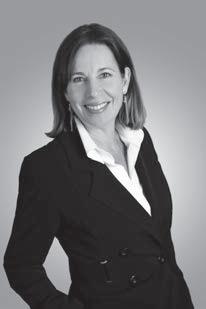
15 THE POTRERO VIEW November 2016 Claudia Siegel CRS, Top Producer & E-pro LIC# 01440745 415.816.2811 claudiasiegel@zephyrsf.com www.claudiasiegel.com Luxury Home Marketing Professional | Creating Excellence with Integrity Potrero Hill and Noe Valley Specialist 25 Sunview Drive 04 | BED 02 | BATH 01 | CAR SOLD in 8 DAYS for $150K OVER ASKING with MULTIPLE OFFERS For a $120 annual fee your organization can be listed in Getting Involved. Contact advertising@potreroview.net
TRANS BAY from page 13
Carpet Chronicles VII
BY PAUL MCDONALD
I had a Saturday mid-morning call at a dilapidated apartment complex off Highway 280 in the Excelsior. I was met by a heavyset woman with a pleasant face and demeanor in her mid60s. She told me she was the building’s owner, and needed a carpet quote for one of four identical units, occupied by her sister, who recently suffered a stroke and was in the hospital.
The woman explained that she lived in unit one, her absent sister and late mother in unit two, one of her 30-year-old twin daughters in unit three and the other twin in unit four. She’d barricaded the front door to unit two with trash cans that I had to move prior to her unlocking the door. As the door opened, a warm, ghastly stench was released that made me reel and step back. The woman seemed undaunted, then got sidetracked by one of her twin daughters emerging from the next unit down.
I couldn’t go in. It was pitch black inside, putrid and junk filled. I asked if I could measure another unit, as the four two-story units stood side by side and were all the same in layout. Surprisingly, my request was denied. The woman said her grandson was asleep in one of the bedrooms in her unit; I guess the twins’ units were off the consideration table.
I asked again what exactly she needed. She said the front landing area, stairs, top landing and front
bedroom on the second floor. From outside I could estimate the lower landing area and the stairs, as I could see half of them. An obsolete mechanical chair lift was stuck a quarter way up the dirty stairway. I gritted my teeth, breathed a few breaths of fresh air, and headed in while the woman went into one of the twin’s units.
Disturbingly, there were two dogs in cages at the top of the stairs. I wasn’t to go into the late mother’s back bedroom, only the front stroke victim’s chamber. I was in and out within five minutes, breathing through my shirt, hasty with my measurements. As I hurriedly exited unit two, a sense of relief came over me. I was now free and could breathe again.
I noticed that two doors down there was a gathering; the attractive 30-yearold twins were outside with their mom and two little boys, perhaps seven and five, dressed in identical karate outfits, ready to be taken to their Saturday morning karate class. I brought my samples down, and asked the kids what color they thought would be best. They loved being involved. The older kid picked immediately; the younger one hemmed and hawed, but eventually made a choice. I told them that I’d flip a coin, and pulled out a quarter. It came up tails; the younger kid beamed, that was his choice. I hadn’t even priced the deal out yet, but the sale was assumed. The owner and I went into her dreadfully messy unit to do the paperwork. I had to write it up on my lap, as there

was no table or counter space to put down my order book. Sold, $1,350.
Another noteworthy sales call was at a fancy hi-rise Van Ness Avenue condominium. I was buzzed in, took the elevator to the sixth floor, and met by a 41-year-old male attorney who appeared to be hung over. His bloodshot eyes were puffy; he was unshaven. His place was very messy, but upscale; red wine stains adorned his carpet. There were ashtrays with cigar butts strewn about, beer cans on the floor and empty booze bottles on the countertops.
I jokingly asked why I wasn’t invited to the party. The guy responded with a wry smile. He had a spare bedroom, which he said used to belong to his roommate. It now contained an expensive mountain bike, empty running shoe boxes, piles of clothes, a snowboard, an ironing board and a mattress flipped up on its side against the wall. I measured as the bachelor texted one, or two, of his girlfriends, laughing occasionally.
Next to his built-in bar area was a huge bird cage containing a large
parrot that fidgeted and squawked as I walked around. The bird’s white droppings were evident below the cage, not well managed by newspapers haphazardly lain down.
After I completed my diagram, I hinted that I needed his attention. He reluctantly set down his phone. I showed him a reasonably priced, multicolored rope-like Berber that was predominantly maroon in color, reasoning that red wine would blend right in, and it was low maintenance. He seemed to appreciate my understanding of his lifestyle, and pulled out a credit card for the deposit. We scheduled the installation. I diplomatically yet adamantly explained that he had to do quite a bit of clean up to prepare the place, including his pet bird, of which the installers wouldn’t want any part. He promised me that he’d commit to moving “Tiffy” the parrot into the tile floor kitchen, and appeared pleased that he’d have fresh carpet, mentioning that he was off to the Bahamas for a seven-day vacation the following week.
Bui explained. In comparison, the unserved percentage is 43 percent in San Jose, 19 percent in San Diego, 10 percent in Los Angeles, and 23 percent in California as a whole. “In San Francisco,” said Bui, “recyclers have to travel further and wait longer.”
“Since the City has a ‘zero waste’ policy, it would seem they are working against themselves being sympathetic to recycling centers closing,” said Jennifer Friedenbach, executive director of the Coalition on Homelessness.
While Hudiburgh believes Recology should be responsible for providing recycling centers, Shireman suggested that this wouldn’t be in the company’s interest. “What is really going on here is the City garbage collector wants to capture and control all recycling by paying the garbage handlers directly. They’re always looking to capture public dollars. It’s a first step to try to take money away from people and give it to the garbage company. That’s what they would like long term.”
“Before we had the Bottle Bill, beverage containers were the biggest part of the litter problem, and recycle rates were pathetically low, well under 10 percent for glass and plastic, maybe 25
percent for aluminum,” Shireman said. “Now they’re about 85 percent. San Francisco’s recycle rates are among the best in the country. A great part of the success of the Bill is that retailers don’t have to take them [recyclable items] back inside the stores, unlike the rest of country. They do have to make sure there is some opportunity within a mile of the stores [to recycle items and get some money back].” Both Shireman and Bui stressed that stores receive a 15 percent state subsidy to maintain recycling centers.
Shireman is sympathetic to small storeowners who suffer from fines or the threat of being fined for noncompliance. Nonetheless, he said: “It’s not the Bill. It’s the City. Still, I think that small stores should [provide a recycling center] just as part of being good neighbors. They should be willing to take back from customers [who buy containers from them]. I am a minority in that belief,” he laughed, “and I had a little store when I was very young. But it would be much fairer for bigger retailers to do it, especially since the state subsidizes it.”
“I live three doors down from Good Life in Bernal Heights on Cortland.” Shireman said. “I know and love their store!”

16 THE POTRERO VIEW November 2016
BOTTLE BILL from page 14
Francisco Shipyard sail anywhere and everywhere,” explained Johnson. “We work on them and then they go back to their routes. We repair ships, do routine maintenance and get vessels up to inspection standards. In terms of modernization for the Navy cargo ships; we pave the way for things like a refresh for the living areas of the ships. We did that recently for a ship from Hawaii. We also support things like new radios, radar systems and engine controls.”
Last September, BAE Systems announced that it’s collaborating with technology companies to develop software that will monitor equipment, fuel and performance in real time for commercial and military vessels. The software, Ship Energy Assessment – Condition Optimization & Routing Enhancement System (SEA-CORES), is being tested on a tanker in Northern Europe for the remainder of the year. To develop the technology, BAE Systems partnered with the University of Southampton; the project is sponsored by Innovate UK.
“This technology will provide the Royal Navy with valuable information that will enable it to make better decisions about how it operates the fleet,” said Chris Courtaux, head of engineering and energy services at BAE Systems, in a company press release. “For instance, reducing speed may save fuel, but could increase the wear to the engine if it sails below its optimum speed. Providing real time data about the impact of such decisions can help the operator to reduce fuel consumption and minimize wear on the engine, helping to save costs and increase the availability of the fleet to fulfill operational commitments around the world. The same technology
is valuable for commercial companies looking for opportunities to boost the competitiveness of their operations.”
In 2015, the Port of San Francisco signed a 20 year lease with BAE Systems to continue shipbuilding services at Pier 70, in advance of the prior lease expiring in 2017. The new lease includes an option to extend operations through 2045. The company employs an average of 250 workers at Pier 70.
POTRERO POWER from page 6
According to Associate Capital spokesperson P.J. Johnston, it’s too early to specify particular development plans. “Associate Capital was entirely focused on doing due diligence, putting forth the bid, and once it was selected, finalizing the purchase, and now setting its sights on development plans for the future,” he said.
Johnston said Associate Capital isn’t ruling out proposals developed by Mission Bay Development Group, the previous owner. According to a May San Francisco Chronicle story, those plans included constructing between 1,000 and 2,000 housing units and one million square feet of commercial space. “It’s still to be determined who Associate Capital is working with,” Johnston said. “During the bid process and then the period leading up to final closure, the buyer was not able to speak directly with previous partners or consultants. Now that the purchase has been finalized, they’re talking to lots of people, including previous participants.”
Johnston added that the vision outlined by Mission Bay Development Group is likely to remain a consideration. “It’s an exciting time with lots


more in terms of details to follow,” he said. “Finalizing the purchase is a milestone opportunity to move forward with what eventually will be a more appropriate use for the neighborhood. This was a power plant that was a source of great consternation and worry for many decades and it was a great achievement to get it closed down. Now we’re getting closer to the day when the site is revitalized for public use and it’s a beautiful location close to the bay. It has a bright future.”







tion could center on making them zero-energy buildings, structures that put as much back into the grid as they consume. In addition to being equipped with solar rooftop gardens, he said that the development could incorporate a community cooperative offering selfdriving electric vehicles. Those shared cars, while unused, could put excess power back into the grid.


17 THE POTRERO VIEW November 2016 Melinda Lee Your Potrero Hill Property Specialist since 2002 CalBRE #01344376 CALL/TEXT: (415) 336-0754 Melinda@MelindaLee.realtor Potrero buyers are voting with their checkbooks! Good properties are selling well, and there’s just not enough to go around. I have sold very successfully during Holiday Time every year ~ get a head start on your new home for the New Year! Call me this week! Should I sell my home now… or wait until spring??? FRONT HOUSE offers 2 Bed & 1 Bath, with remodeled kitchen adjoining a comfortable living/dining room. Two 1-car garages! REAR COTTAGE is also 2 Bedrooms, completely remodeled. Beautiful, private back yard. Call for details and info. Kids back home after college? 872 Wisconsin - 2 Buildings on One Lot!
TRANS BAY from page 15
BAE from page 6

If
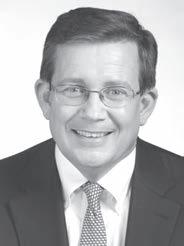
18 THE POTRERO VIEW November 2016 Tim Johnson 415.710.9000 tim@timjohnsonSF.com www.timjohnsonSF.com Lic. #01476421
on the market.
Very low interest rates and powerful demand have continued to keep the Potrero Hill market strong. Many homes are attracting multiple offers after short periods
you
take advantage of strong
buyers. Sales Prices for All Potrero Hill Homes Sold in 2016* In 2016 the average sales price for a home on Potrero Hill has been $1,796,141. If you’d like a free report on the value of your home, call Tim Johnson at 415- 710-9000. What’s Happening with Real Estate on Potrero Hill? *Sales information as of October 19, 2016 2331 19th St ......................$1,550,000 2109 22nd St ........................$850,000 2119 22nd St ........................$725,000 738 Arkansas St ................$1,800,000 623 Connecticut St ...........$1,750,000 1379 De Haro St ................$1,100,000 1387 De Haro St ...................$979,000 1391 De Haro St ................$1,120,000 450 Kansas St ...................$1,370,000 531 Kansas St ...................$3,075,000 1407 Kansas St .................$1,100,000 249 Mississippi St .............$1,100,000 625 Mississippi St .............$1,420,000 632 Mississippi St .............$1,420,000 350 Missouri St .................$2,700,000 623 Missouri St .................$1,515,000 524 Pennsylvania Ave .......$1,350,000 501 Rhode Island St ..........$2,250,000 507 Rhode Island St ..........$2,100,000 542 Rhode Island St ........$1,4250,000 630 Rhode Island St ..........$2,200,000 1095 Rhode Island St ........$1,493,370
Rhode Island St ........$2,948,000 1140-1142 Rhode Island St $1,675,000 721 San Bruno Ave ...........$3,020,000 361 Texas St ......................$2,300,000 542 Utah St .......................$1,250,000 490 Vermont St ..................$1,020,000 776 Wisconsin St ..............$3,750,000 779 Wisconsin St ..............$3,425,000 837 Wisconsin St ..............$1,900,000
have been thinking of selling your home this may be an excellent time to
demand from
1138
the funding of which could be offset by reduced spending on “professionallyprovided” housing services.
Insufficient public transportation: For the last 65 years we’ve largely outsourced our transportation needs to privately-owned cars, investing in a vast array of roads and highways on which to ply our hurry boxes. For a while this strategy indirectly worked to address homelessness; those who couldn’t afford to live in San Francisco moved to the East Bay or Central Valley, and commuted in. With freeways now insufferably clogged, not to mention such pesky items as global warming, the era of car dependency is over. The solution: massive investment in a diversity of public transportation modes, including fixed rail, buses, vans, ferries, and water taxes.
Economic dislocation: To hijack the Peter, Paul, and Mary song, “Where have all the Blue Collar jobs gone, long time passing? Where have all the manufacturing jobs gone, long time ago?” The steady bifurcation of incomes, into the unbelievably wealthy and the barely able to make it paycheckto-paycheck, has hollowed out the ability of men, in particular, to afford a home, much less a family. This is a hard challenge to solve. Government isn’t so good at creating high-wage employment, outside of its direct hires – and excessive over-timers – or such programs as the Works Progress Administration (WPA). The solution: mini-WPA, focusing on by-design
manufacturing made possible by 3D printing, high end landscaping and maintenance of public spaces, the creation of art, and newfangled package delivery methods, including drone production and deployment.
Drugs and alcohol: It’s safe to say that many homeless individuals got where they are, and stay there, because of drugs and/or alcohol. It’s hard to keep a job when using, much less a reliable set of family or friends. Managing substance abuse requires a plethora of approaches. The solution: needle exchanges, “wet” houses, on-demand access to effective counseling and programs, paid for through higher taxes on alcohol and (medical) marijuana.
Compassion gap: For many of us, our initial reaction to seeing a sidewalk tent, or homeless person, is “ick.” We wish they’d be gone, or at least out of our sight. We don’t invite them into our homes, offer a ride to the nearest shelter and only occasionally hand them a sandwich, or spare change. There are few “HoboSigns” indicating that a down-on-their-lucker can sleep in the hayloft, or camp in a backyard. This may be prudent; we don’t know who these strangers are. We have a choice, though: we can become like India, and accept, even embrace, people living in cardboard boxes outside our glass-clad skyscrapers; or we can nourish our desire to provide people who are on hard times with something better. The solution: look in the mirror.
Bad government. For better or worse, former mayor, now lieutenant governor, Gavin Newsom met with his

homeless point person daily. Our current mayor deigns to do so weekly. We can hope that the new consolidation of municipal homeless services improves things, but we should also verify that it’s doing so. The solution: democratic vigilance and engagement. We have to hold our politicians’ feet to the fire.
San Francisco’s awesomeness: The City’s gorgeous topography, placement between the ocean and bay, first rate cultural institutions, compelling weather – which is becoming more of a sanctuary, as triple digit heat waves regularly hit the rest of California –and interesting architecture make it darn attractive. We’re a kind of world heritage site. The rich want to live here, or at least own a piece, and everyone else wants to visit, driving up the cost
of everything. We could become less awesome, by neglecting homelessness and keeping the streets filthy, but that doesn’t seem like a compelling strategy. The solution: recognize how lucky we are to live here, and recommit to doing the right thing, whatever that is for you.
ROCK BAND from page 4
and even though parents may have the best intentions in mind, their own agendas might get in the way of their own kid’s expression. Sometimes the family dynamic can be very subtle; subtly difficult at times. Sometimes the
ROCK BAND continues on page 21
JANUARY 1, 2017

19 THE POTRERO VIEW November 2016
HOMELESS from page 2

PG&E wants you to always be informed about potential power outages in your area.
That’s why PG&E offers outage alerts via email, text and phone that provide up-to-date information about the cause of an outage and let customers know when they can expect the power to be back on.
PG&E crews respond to power outages 24 hours a day to restore power as quickly and safely as possible. To stay informed, sign up for outage alerts at pge.com/outagealerts
20 THE POTRERO VIEW November 2016 “In the event of a power outage, we want our customers to stay safe and stay informed.” BRANDON GONZALES Troubleman pge.com/outagealerts Helping you stay informed “PG&E” refers to Pacific Gas and Electric Company, a subsidiary of PG&E Corporation. ©2016 Pacific Gas and Electric Company. All rights reserved. Paid for by PG&E shareholders.
Go online Sign up Stay informed
time are very complicated. We work until we understand it, until we can make the voters understand it on an eighth grade level.”
“Packard’s broad experience has given her the principles she applies to her work on the Committee: ‘To be objective and considerate of both the process and the people involved,’” said Tony Kelly, president of the Potrero Hill Democratic Club.
“Betty is one of those miracle people one is lucky to meet along the way in life,” said director of elections, John Arntz. “She’s principled, openminded, and a juggernaut who moves past obstacles. We’ve all benefited immensely that she returns every year.”
Packard wants to resign her position on the Committee when the timing is right. “There will be three new people on the Committee this year, and if I left as well there would be four, and it just wouldn’t work with four new people,” she explained. “I just have so much invested in this Committee. In the beginning no one had much interest in staying on the Committee, and if I didn’t stay all the people that wanted us gone would win. So I just took it upon myself to make the Committee work. And that is something that has become very important to me.”
Another longtime volunteer position Packard holds dear is with the San Francisco Symphony Store. A music lover all her life, and a music minor in college, Packard got involved with the symphony when she moved to San
Francisco. “Can you imagine?” asks Packard, giggling, “Thirty-five years!” This year, out of more than 1,800 symphony volunteers, Packard was named Volunteer of the Year.
Next year marks Packard’s 50th year as a Press Woman. “It’s an important organization to me; as a result I chair the State High School Communications Contest and work with about 25 high schools throughout the state and come up with state winners. I always have a Northern California awards program as well. So that is close to my heart.”
Packard is also involved with the Old First Presbyterian Church as an elder, though she’s looking to reduce her responsibilities; is on the advisory council for the Conservatory of Flowers in Golden Gate Park; and on the National Education Board for the National Press Women. “It’s one of those things,” said Packard, “if you are asked to fill a niche and you can fill it, and you are going to be able to do the best job that you can do, then why not?”
“You just do it,” Packard said. “How did I raise two children and work as a single mother in the ‘60s and ‘70s when there wasn’t single mothers working? I’d like for it to slow down, but there are people that maintain it will never slow down for me because that’s how I function. I sleep four to five hours a night, sometimes I can’t sleep more than that. What I really want to do is sit in a rocking chair and read a book,” she laughed. “But I can’t do that. There is always more to do.”
Packard will be 79 this year; she refuses to let a number determine her
Housekeeping
CLEANING PROFESSIONAL 28 years experience. Apartments, homes or offices and apartment buildings. Roger Miller 415-794-4411 References upon request.
abilities. “It’s infuriating for doctors to say to me, ‘You have to look at how old you are.’ Sure I look at people who aren’t doing what I’m doing at my age, who aren’t involved in life, or who don’t find life exciting…but life motivates me! My husband calls me Mrs. Curiosity. I am inspired by learning, and seeing and doing new things. There is always something new to learn, always something new to do.”
One of Packard’s greatest achievements, and what she’s most proud of, is her family. Packard has six grandchildren and five great grandchildren. “Most of my grandchildren are all involved and as passionate about things just like I am, so it’s really great to see the continuation of passion about life.”
Packard will never be a mushroom; she’s already solidified her legacy as a champion. “Sometimes I think I’ve lived a thousand lives. I think each part of my life is its own separate journey that has come together on the path of life. I’ve had many excursions.”
Photography Consultant
Experienced photo technician, specializing in in-home/studio archiving and file management. Call 826.266.7587, for Sam.
ROCK BAND from page 19
[parent’s presence] can make a child behave completely differently than if they were on their own,” Gorman said.
According to Gorman, a unique kind of confidence comes from making art at Rock Band Land. “Neither of us are at all concerned with making rock stars or making kids become wildly proficient at their instruments,” he said. “That being said, you have many kids who have been with us for all of the seven years that we’ve been open and we’ve seen amazing creative developments within them and a certain appreciation for individuality and just weirdness that I don’t think they would have had otherwise because they have spent seven years making original art and original music with us in a space where it is safe to be different, and it’s safe to be the misfit and it’s safe to be the oddball.”
That style of instruction is working for Rock Band Land. It was named California Small Business of the Year by California State Senator Mark Leno.
The next Big Show, open to the public, is at the Verdi Club on December 11. Tickets are $10 for adults, $8 for children.
City and County of San Francisco Outreach Advertising
NOVEMBER 2016
Stay Connected To the City through SF311
The SF311 Customer Service Center is the single stop for residents to get information on government services and report problems to the City and County of San Francisco. And now, we have even more ways for you to stay connected to the City with our SF311 App and SF311 Explorer website.
The SF311 App lets you get information on City services and submit service requests on-the-go right from your smartphone. You can track your service requests through the app or through our new website, SF311 Explorer.
Download the SF311 App from your smartphone’s app store and visit the SF311 Explorer at explore311.sfgov.org today!
Count on WIC for Healthy Families
WIC is a federally funded nutrition program for Women, Infants, and Children. You may qualify if you are pregnant, breastfeeding, or just had a baby; or have a child under age 5; and have a low to medium income; and live in California. Newly pregnant women, migrant workers, and working families are encouraged to apply.
WIC provides Nutrition Education and Health information, breastfeeding support, checks for healthy foods (like fruits and vegetables), and referrals to medical providers and community services.
You may qualify for WIC if you receive Medi-Cal, CalFresh (Food Stamps), or CalWORKS (TANF) benefits. A family of four can earn up to $3,747 before tax per month and qualify.
Enroll early! Call today to see if you qualify and to make an appointment. Call City and County of San Francisco WIC Program at 415-575-5788.
This institution is an equal opportunity provider
Board of Supervisors Regularly Scheduled Board Meetings November and December 2016 Meetings
OPEN TO THE PUBLIC –Tuesdays, 2:00pm, City Hall Chamber, Room 250.
• November 1
• November 15
• November 29
There will be no scheduled meetings on November 8th and 22nd.
• December 6
• December 13
There will be no scheduled meetings on December 20th and 27th. LANGUAGE
Requests must be received 48 hours in advance required for interpretation. For more information see the Board of Supervisor’s website www.sfbos.org, or call 415-554-5184.
The City and County of San Francisco encourage public outreach. Articles are translated into several languages to provide better public access. The newspaper makes every effort to translate the articles of general interest correctly. No liability is assumed by the City and County of San Francisco or the newspapers for errors and omissions.
21 THE POTRERO VIEW November 2016 CNS-2940298#
INTERPRETATION AVAILABLE UPON REQUEST CHINESE…. SPANISH…. FILIPINO
BETTY PACKARD from page 9
OTE
Gold, Chapter Sixteen
BY STEVEN J. MOSS
“Why didn’t I know about this?” asked the Supervisor. She was standing behind her desk in her City Hall office, looking down at a copy of The SF Lightning Bolt. “If you want my help you’re supposed to keep me informed.” She peered over half-glasses at John, whose body overflowed in the armchair facing the desk, like an oversized bean bag that’d been stuffed into a too small piece of furniture. He shifted uncomfortably.
“It’s a good thing,” he said. “It’ll put pressure on Chester to sell to the right party.”
“And who,” said Rebecca, as she picked up the Bolt with the tips of her fingers and deposited it into a blue receptacle marked “recycle,” taking a tissue and rubbing her hands with it afterwards, “would that be?”
“The highest bidder, of course,” said John, leaning forward. “We’ll have them work against each other…”
“And what will we get? I mean, the community?”
“Millions,” said John. He paused a few beats. “Towards affordable housing. And, with the idea of a turning the property into a park on the table I’m sure we can get a contribution to renovating Jackson Clubhouse. Plus, we’ll make some new friends.”
Rebecca sat down, and templed her fingers. “John, who do you work for?”
“Uh, I’m just trying to do what’s best for the community.”
“No, I mean, who pays you? I’m truly curious…”
“Well, that depends…”
“In this case,” Rebecca had softened her voice to the tone of a kindergarten teacher asking a student to read a difficult passage from a children’s
book. “Who is paying you in this case?”
“Um, well, I’m in negotiations with one party, and have been paid a small fee by another party to, um, make strategic introductions.”
“Which parties?!” Rebecca shouted. “Stop talking about “parties!” Tell me names!”
“The biotech company,” Chester stammered. “I’m talking with them, working out a contract. Representatives from the wealthy family paid a one-time fee, but I’m negotiating with them…”
“And the park idea? Who came up with that?”
John smiled, like a kindergartner who had just successful read a multisyllable word. “That one’s mine,” he said, “Working with some community advocates. You’ve gotta push these things just right to get the most out of them…”
“Meaning your girlfriend; she’s the community advocate,” said Rebecca. “Okay, John, keep me in the loop, about everything. Now get out.”
After a short struggle with the chair, which almost won, John stood up. “Right. I’ll keep you informed.” He paused. “Do you care who gets the property?”
“Whatever’s best for the community,” Rebecca said, her eyes locked on the computer screen sitting on her desk.
“Okay,” said John, who shuffled towards the door.
“Oh,” said Rebecca, without looking up. “Get me a Mercedes as part of the deal.” She glanced at John, whose hand was on the door knob. “Kidding!” She looked back at the screen without smiling.
“Right,” John mumbled to himself, and exited the office.
Each month the View publishes a

chapter from Gold, a serialized tale of politics, capitalism, and corruption in San Francisco. Previous chapters can be found on the paper’s website, www. potreroview.net. Advertisers or supporters interested in sponsoring future installations, or publishing the final manuscript, should contact editor@ potreroview.net.
CRIME from page 12
on 3,301. The DA’s 2015 assault cases increased by 57 from the prior year, with 133 more indictments for automobile burglaries.
The DA’s 2015 Annual Report emphasizes that San Francisco has a deficit in mental health services, stating that “Eighty percent of all police calls involve mental health issues. And yet, we continue to run a 120-day average wait time for mental health beds through our Behavioral Health Court. Simply put, while our needs for community-based mental health treatment continue to soar, our in-custody services are increasingly insufficient.”
The DA’s Office supported the 2015 Board of Supervisors decision to not fund the construction of a new jail, and instead advocated for more mental health treatment resources. The Office’s annual report data indicates that 64 percent of those jailed in the United States have mental health problems;
UCSF at Mission Bay Community Meeting
roughly 40 percent of those in San Francisco County Jail need psychological care. The DA also maintains that according to 2015 data, 50 percent of the City’s jail cells were vacant.
A June San Francisco Examiner article explored various potential causes of the rise in crime and decline in arrests, including a reported shortage of police officers due to retirements, as well as District Attorney’s policies that limit drug-related criminal prosecutions.
This month, voters will decide on Proposition R, a ballot measure put forth by Supervisor Scott Wiener – who is running for State Senate – and supported by Supervisors Malia Cohen, Katy Tang and Mark Farrell. Under the proposition, a Neighborhood Crime Unit would be created as early as next year, when police staffing is geared to swell. Three percent of the police force would be assigned to parts of the City where property crimes are pervasive, and would be responsible for both 911 and 311 calls in those areas.

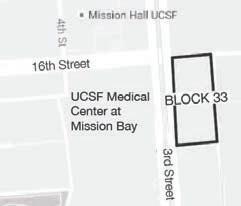
UCSF will present the proposed design for a new building on Block 33, located on the southeast corner of 16th and 3rd streets. We invite you to learn more about the project and give feedback on the proposed building and landscape design.
Monday, November 7 at 6:30 pm Rock Hall, Pottruck Auditorium, Room 102, 1550 4th Street at Nelson Rising Lane San Francisco, CA 94158
The proposed building will consolidate The Center for Vision Neurosciences, opthalmology research, and academic and administrative office space for various UCSF units.
UCSF Mission Bay Campus is accessible using the MUNI T-Third light rail and bus #55. Parking is available at the Third Street Garage along 4th Street, one block north of 16th Street. Parking vouchers will be provided for attendees.
For more information, contact Kris Ongoco at kristian.ongoco@ucsf.edu or 415-476-0118
To be added to our notification list, email community@cgr.ucsf.edu, specifying the campus site(s) of interest: Mt. Zion, Parnassus, Mission Bay, Zuckerberg San Francisco General Hospital. UCSF fully subscribes to the Americans with Disabilities Act. If at any time you feel you have a need for accommodation, please contact UCSF Community & Government Relations at 415-476-3206 or community@cgr.ucsf.edu
22 THE POTRERO VIEW November 2016
“This
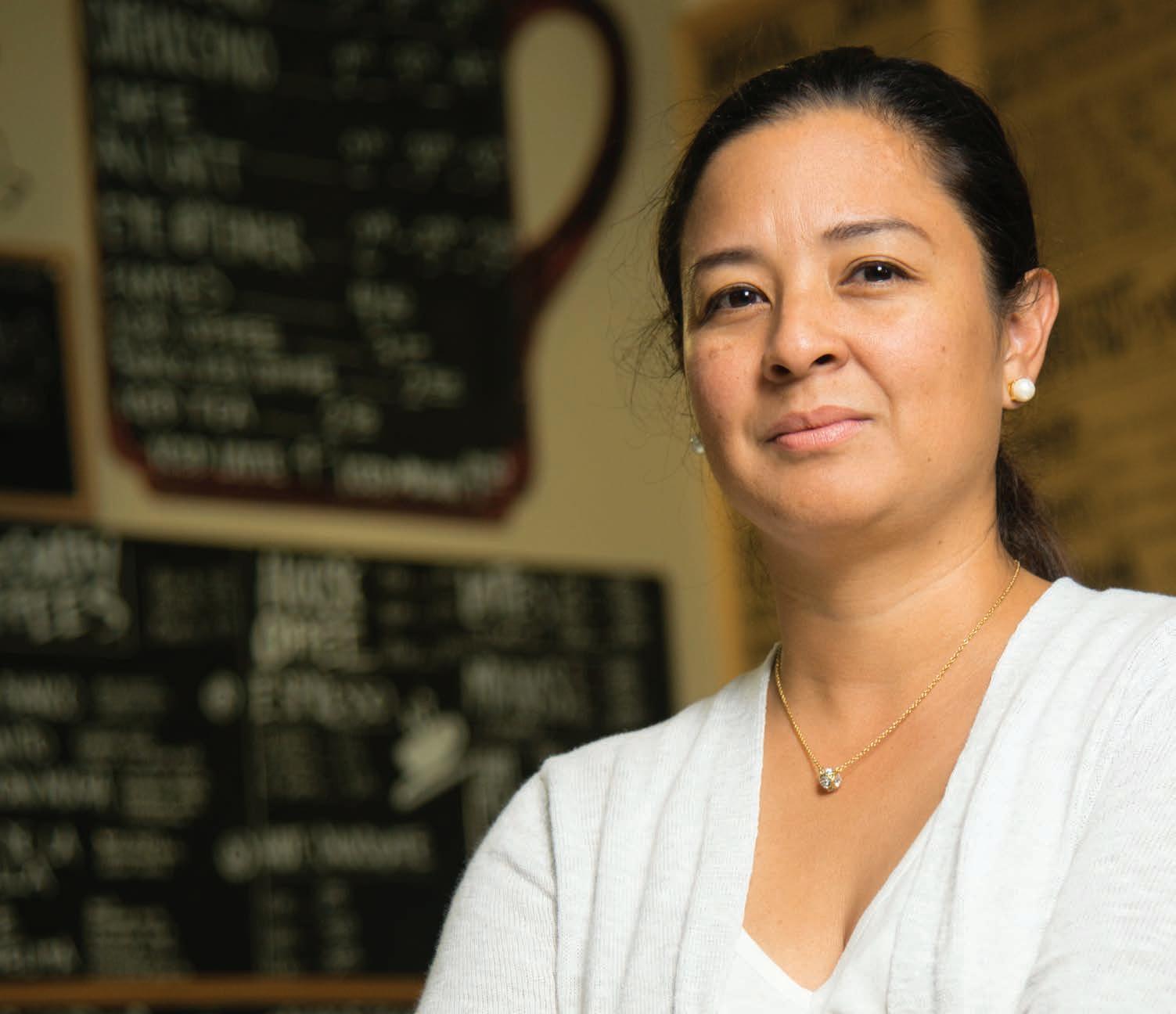




23 THE POTRERO VIEW November 2016 Store owners and their customers say Prop. V is a tax on GrocerieS.
isn’t
a tax on sodas — anything in our restaurant could be increased to recoup the cost.”
“Sally” Marquez Grandma’s d eli and Café South of Market
is a grocery tax that will harm working families and those who need help the most.” Adel Alghazali Mi Tierra Marke T Mi SS ion Di S trict “Politicians are trying to pass a grocery tax that hurts small business and restaurant owners like me. ” Danielle Reed Reese Queen’s Louisiana Po-Boy Café Bayview– h unter’ S Point “San Francisco is already too expensive. The last thing we need is a tax on our groceries and on my customers.” Roberto Ocaña Lu C ky Pork Marke T Mi SS ion Di S trict JOIN yOur LOcaL SMaLL BuSINESSES. VOTE NO ON PrOP. V enouGh iS enouGh: Don’t Tax our Groceries. VOTE NO on PrOP. V Do the research yourself at: SFGrocerytaxFacts.org ENOUGH IS ENOUGH VOTE NO PROP. V ON Paid for by No on V, Enough is Enough: Don’t Tax Our Groceries, with major funding by American Beverage Association California PAC. Financial disclosures are available at sfethics.org. Don’t ForGet to Vote on election Day tueSDay, noVember 8!
just
Soledad
“Prop. V




24 THE POTRERO VIEW November 2016
PROPOSED
LEARN MORE AT | MISSIONBAYALLIANCE.ORG missionbayalliance @ EQUALS BAD DEAL FOR POTRERO HILL
WARRIORS'
ARENA NOT A GOOD FIT









 BY JACOB BOURNE
BY JACOB BOURNE




















































































































